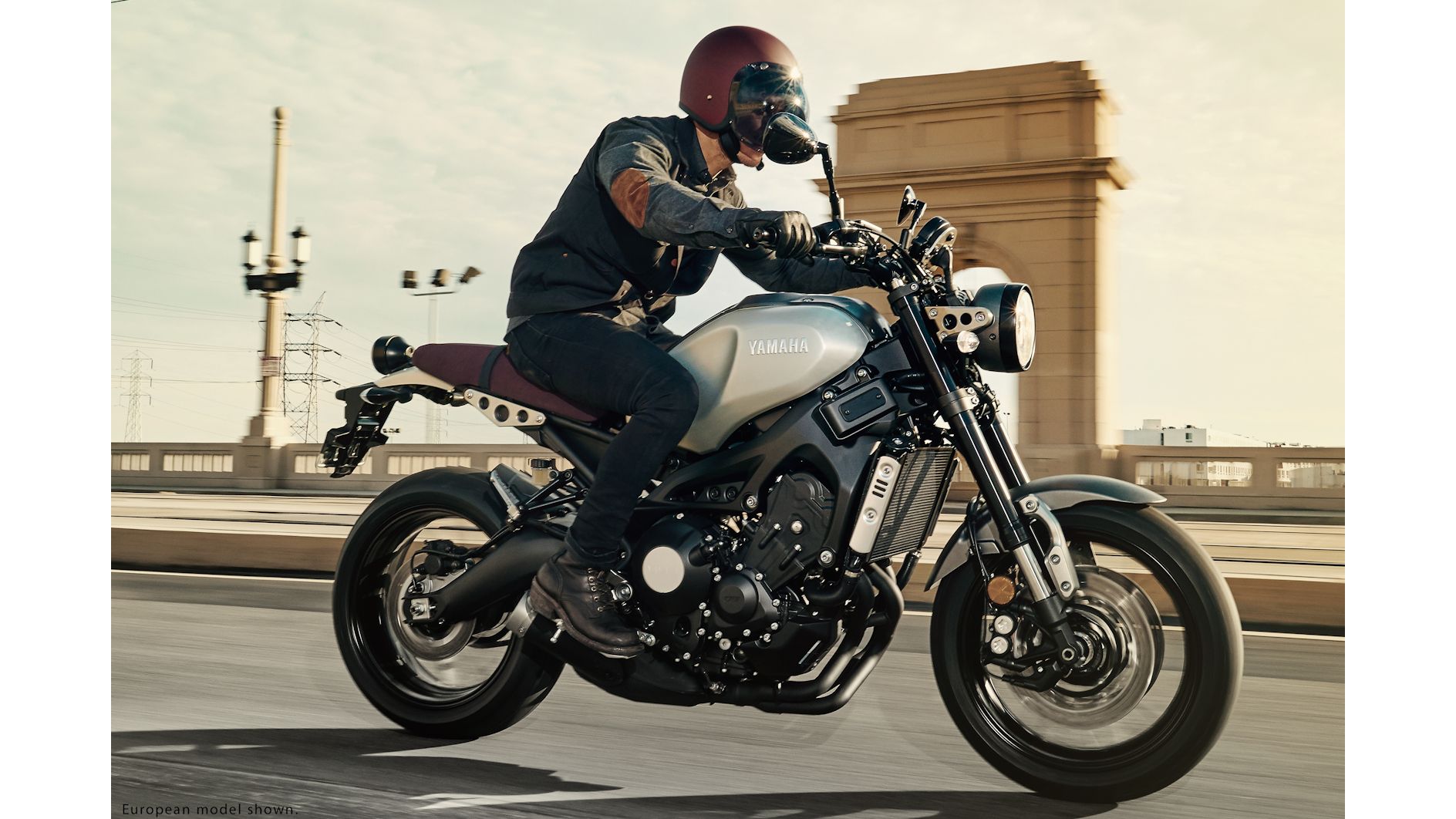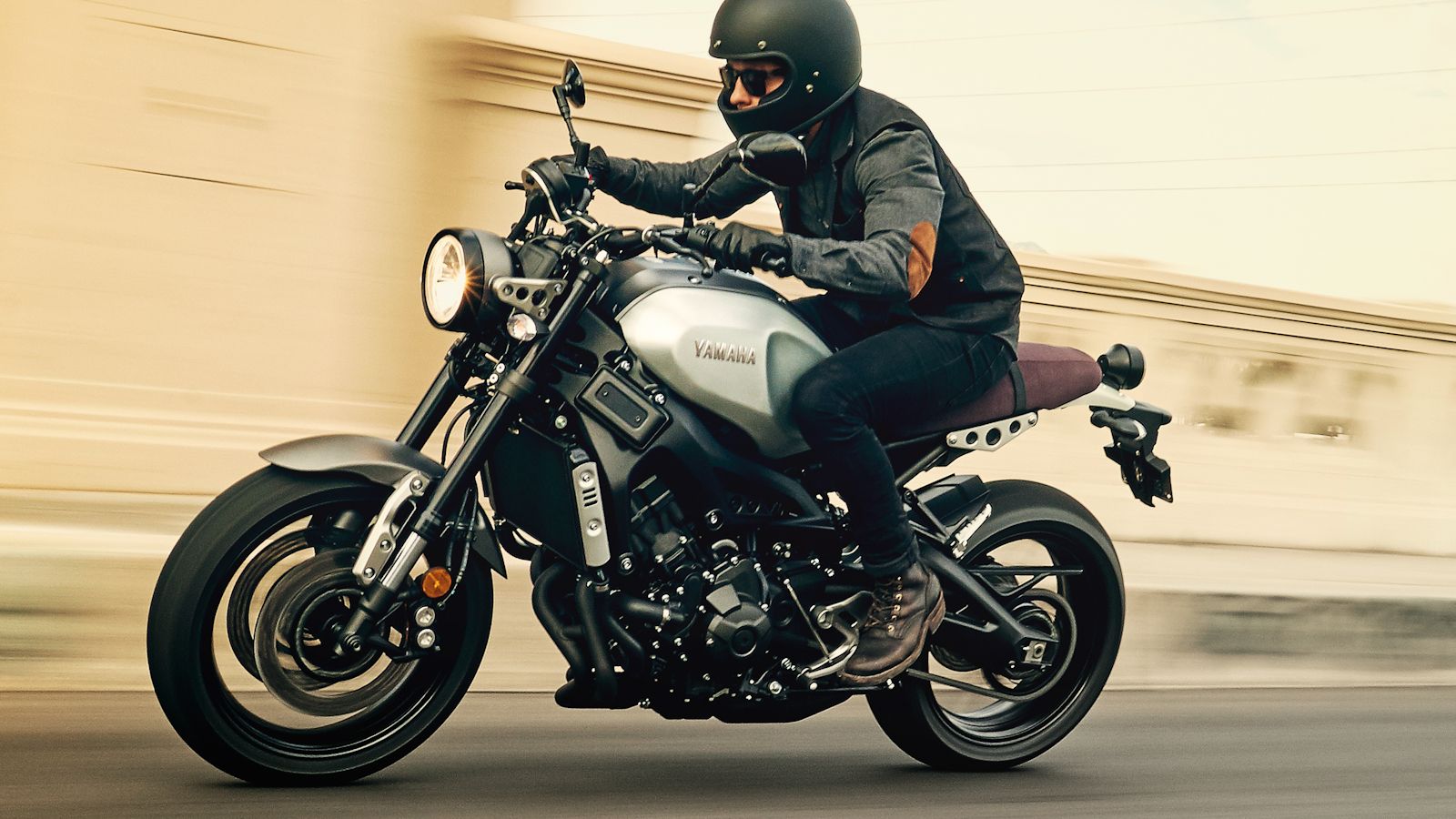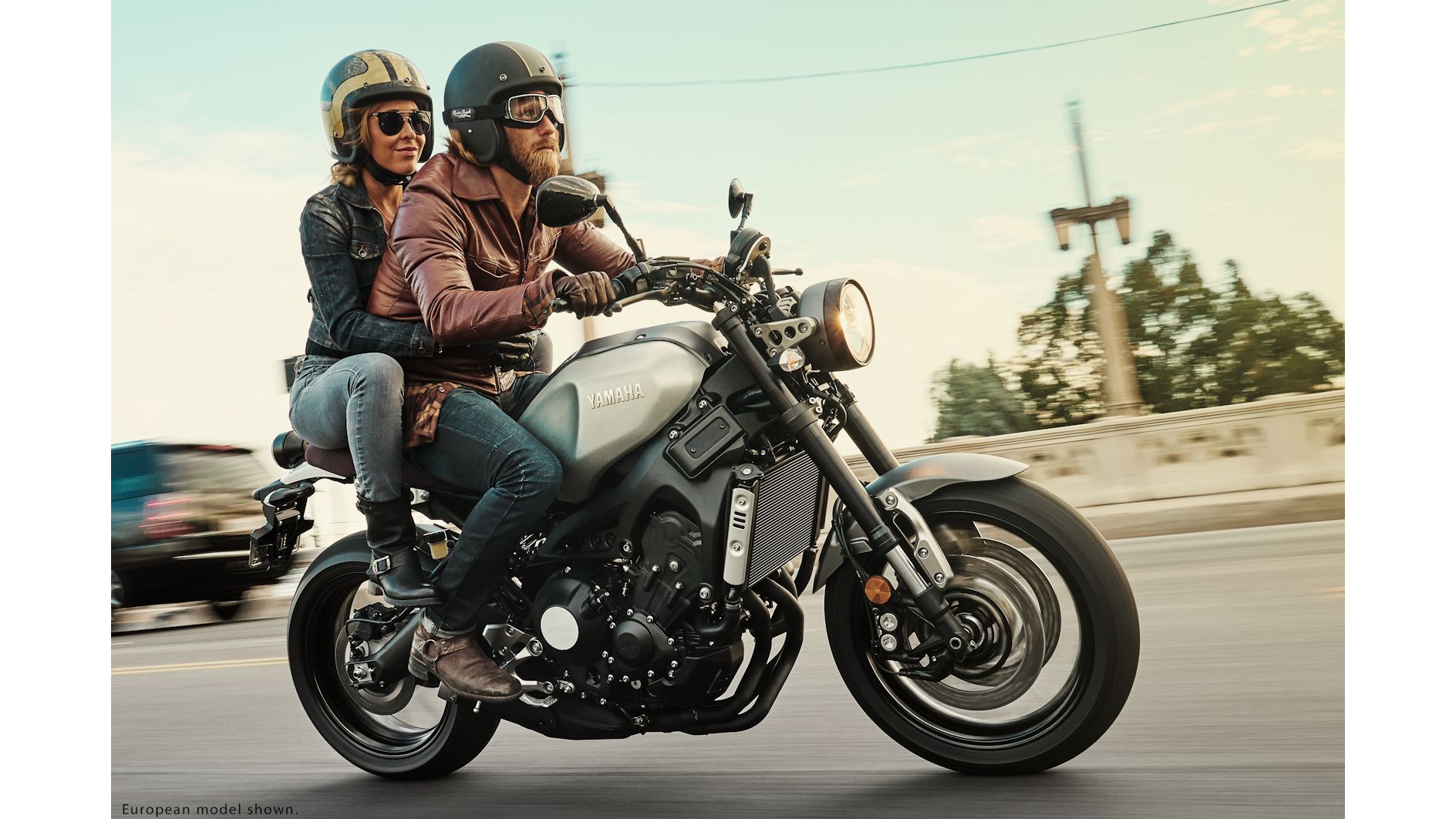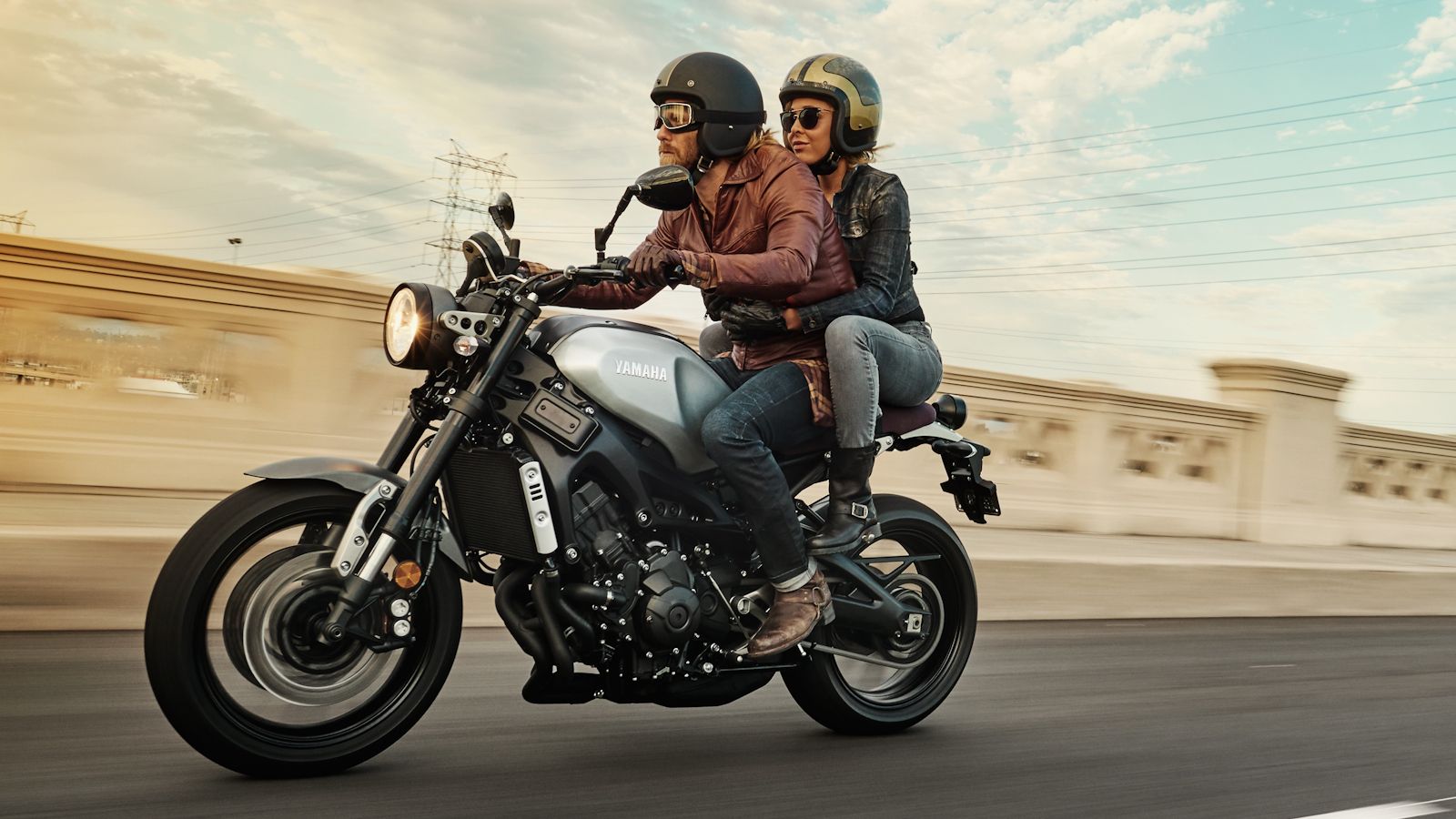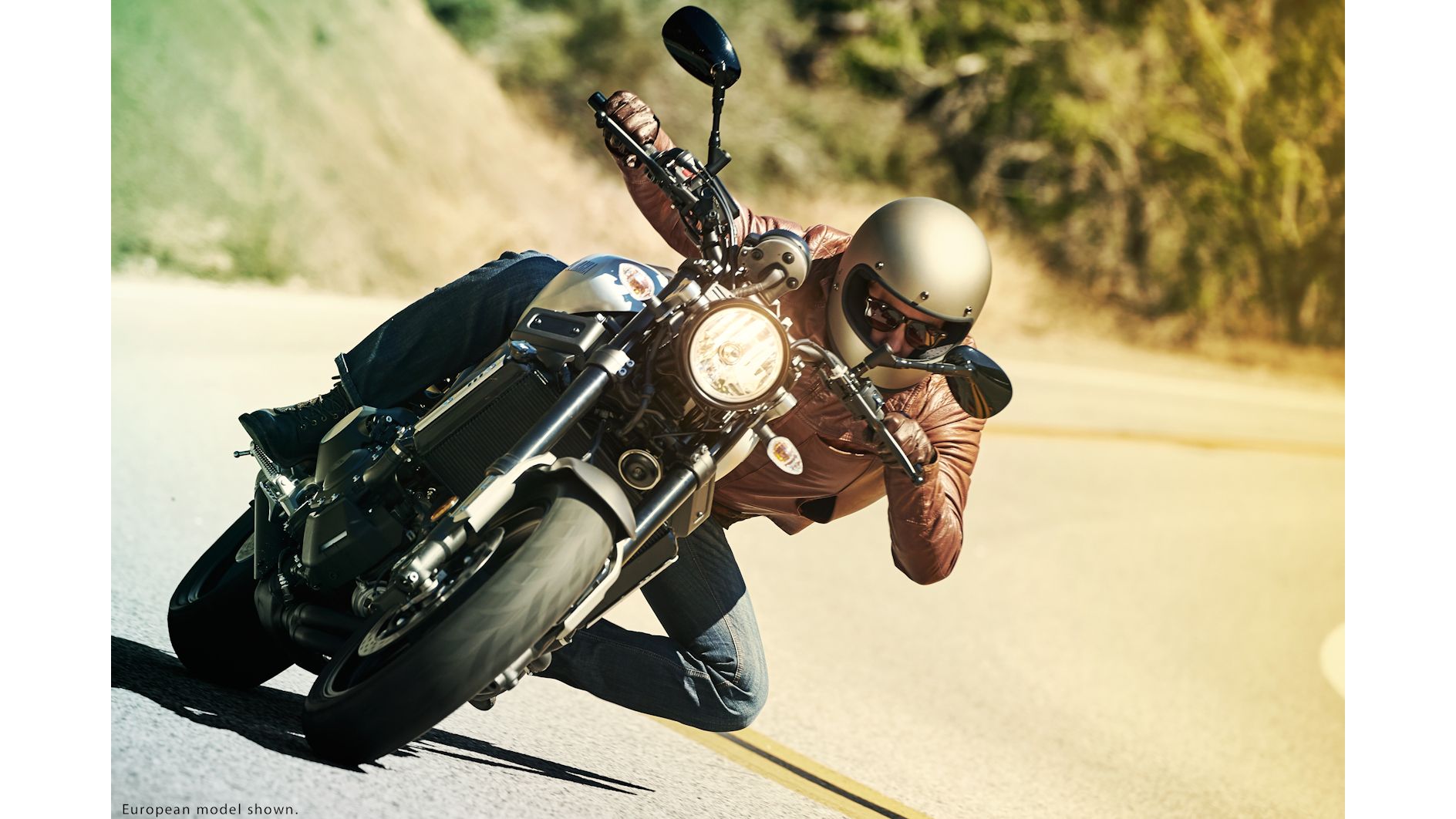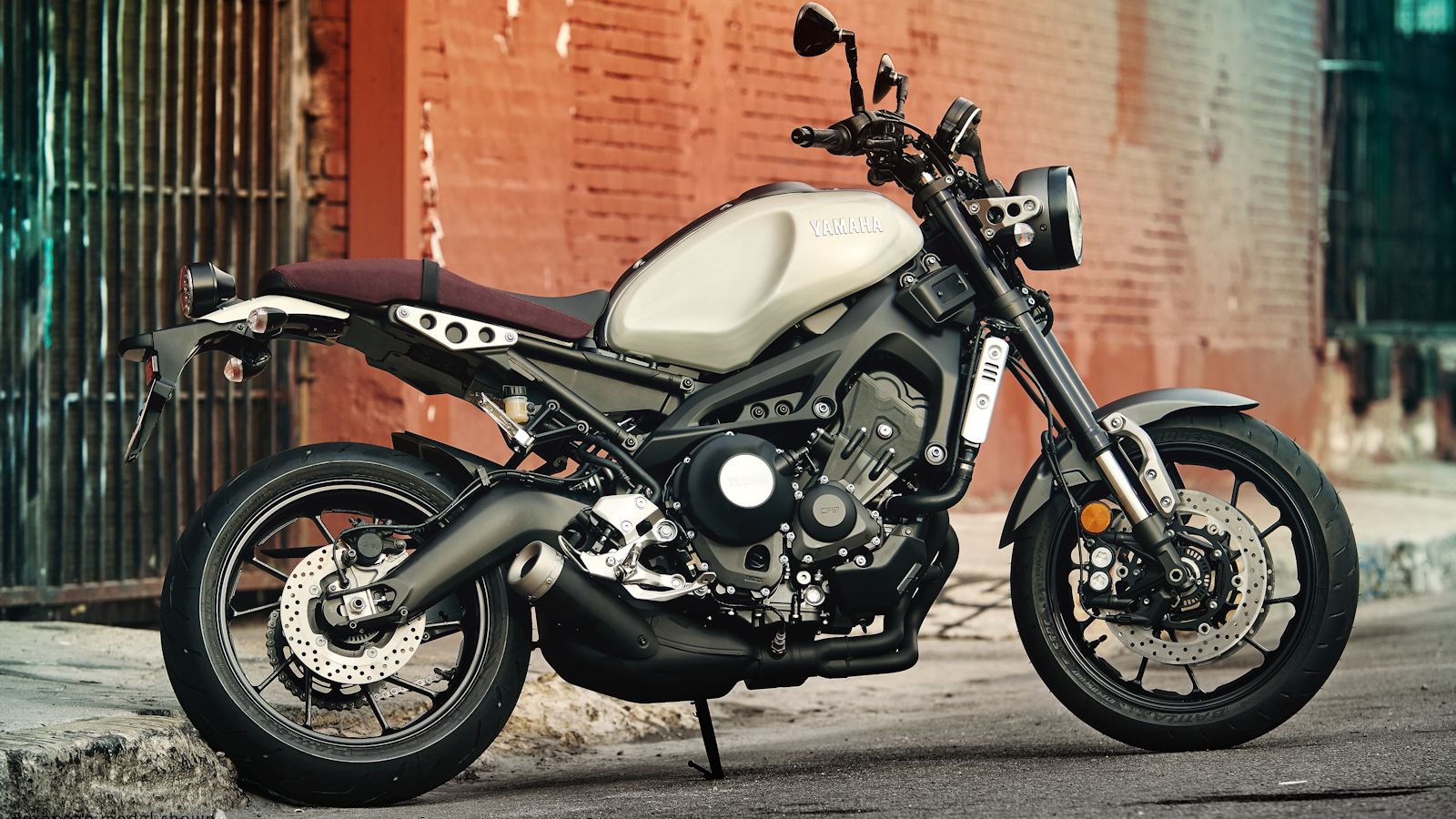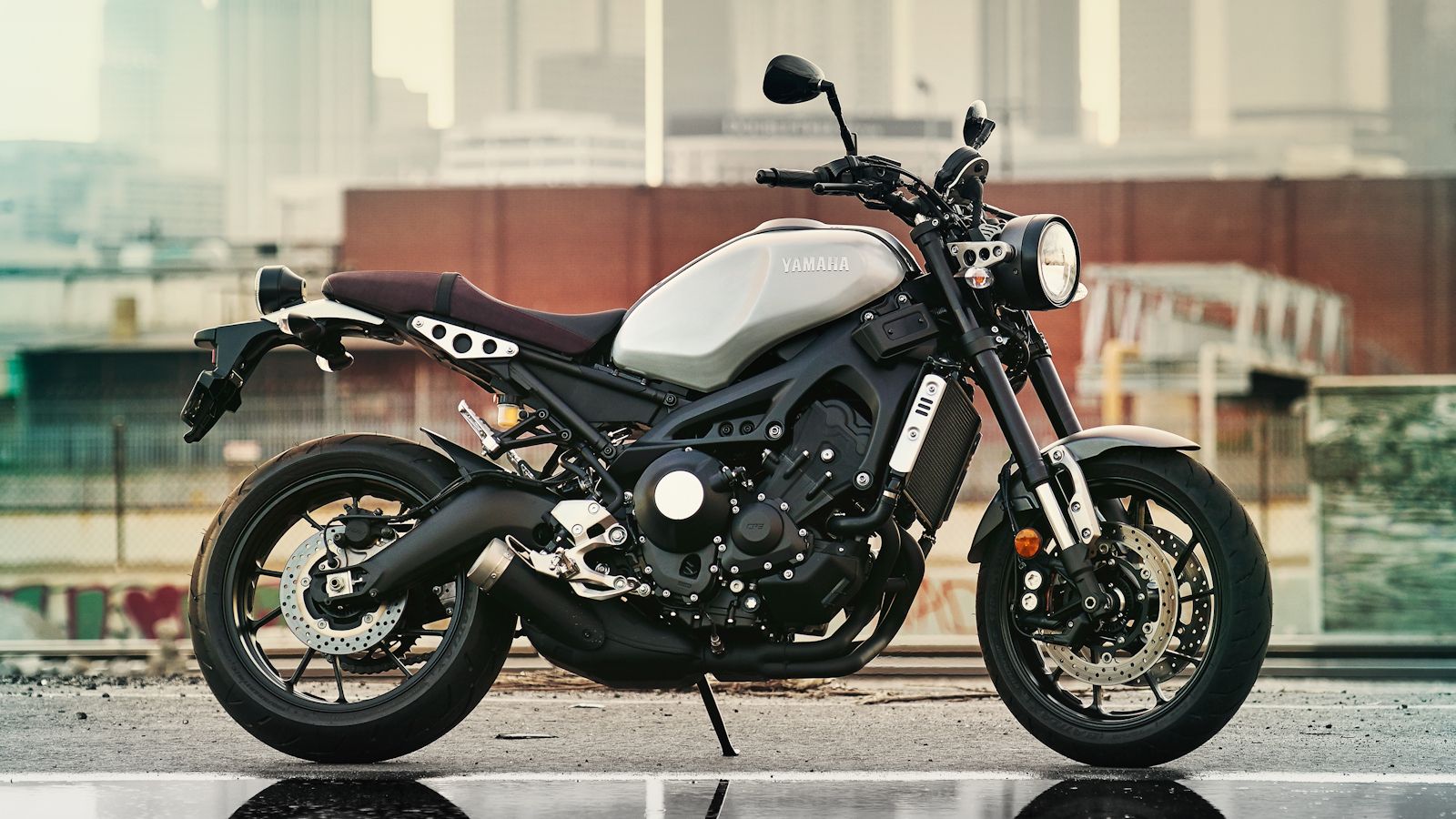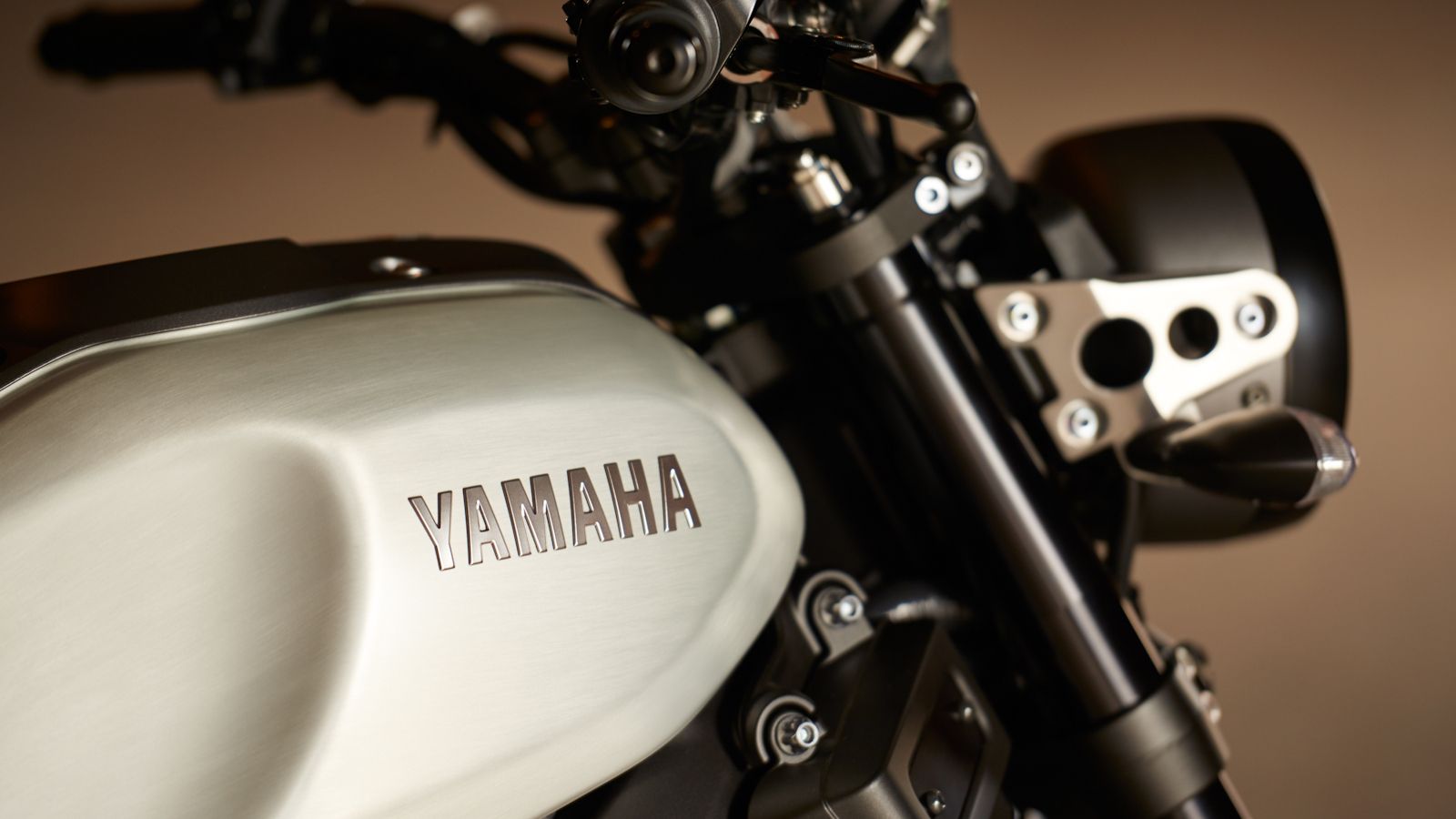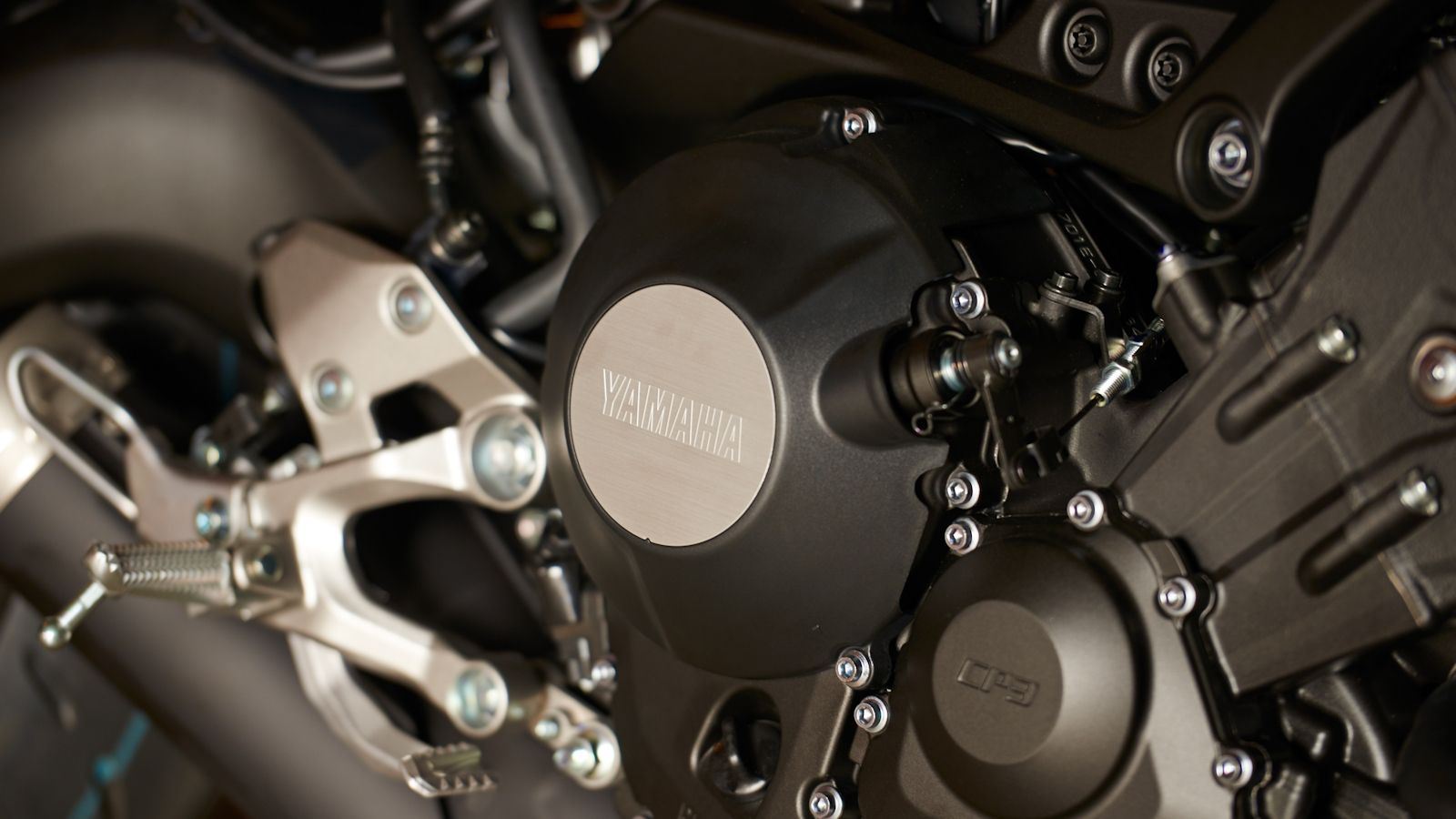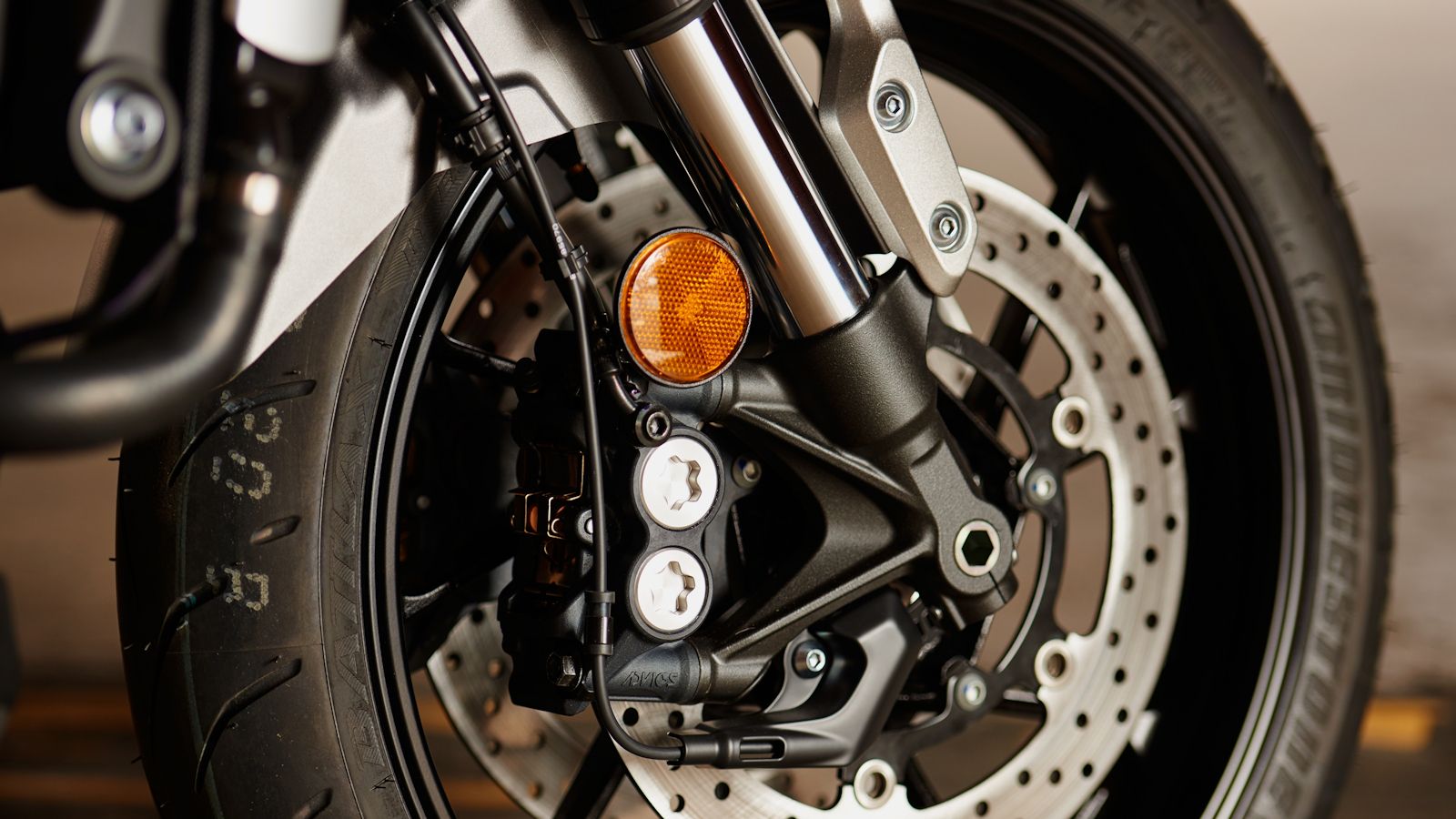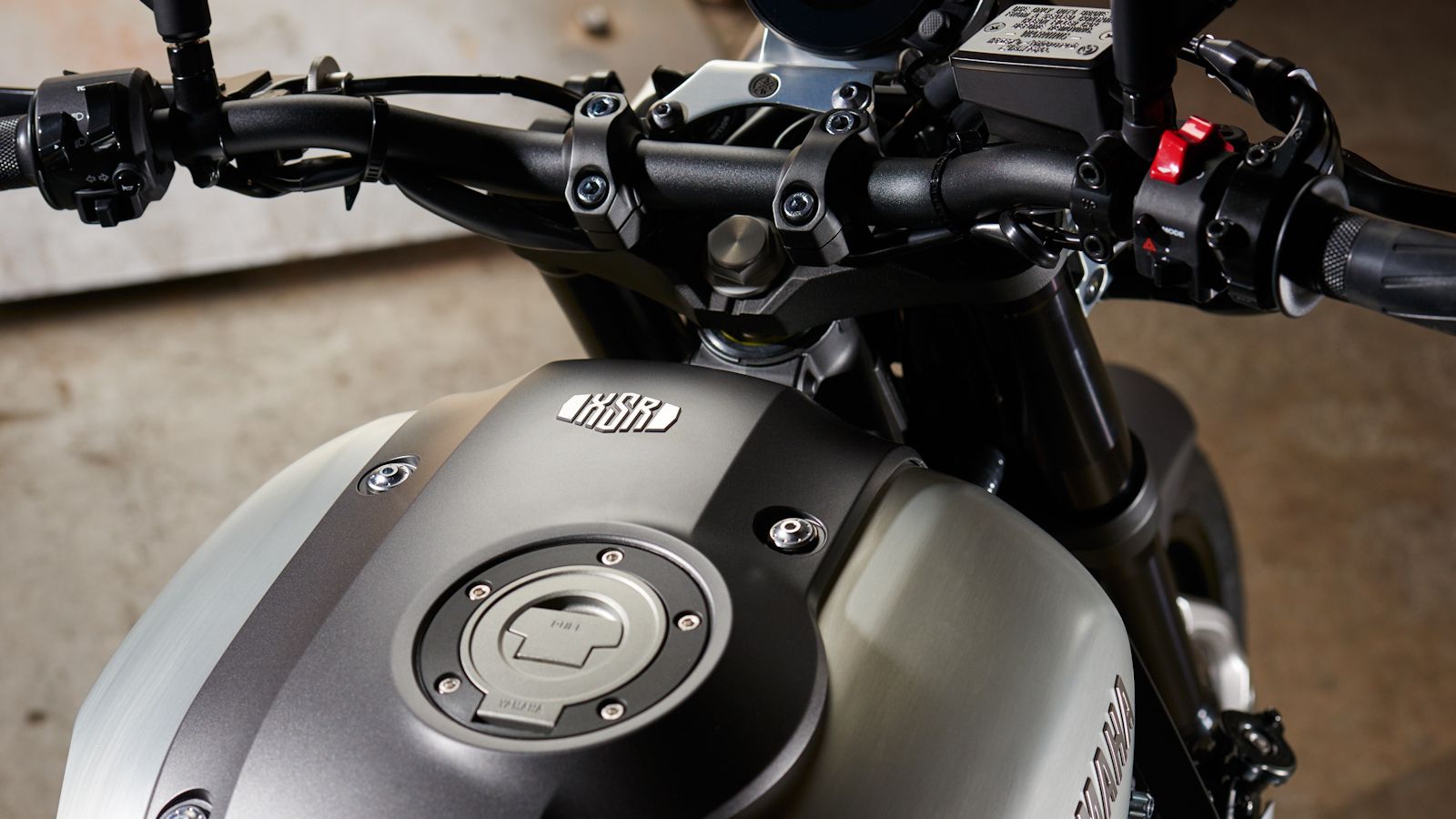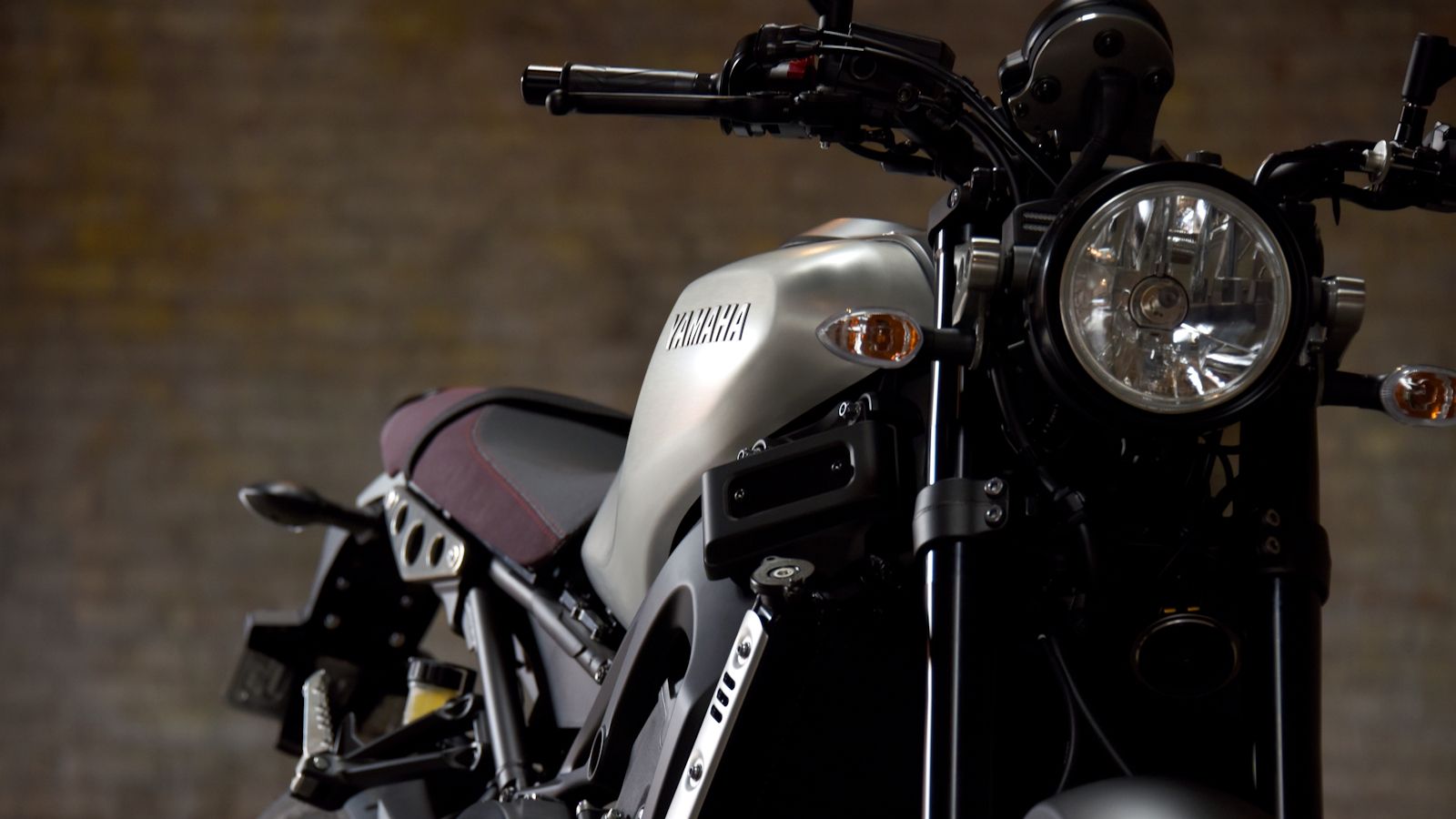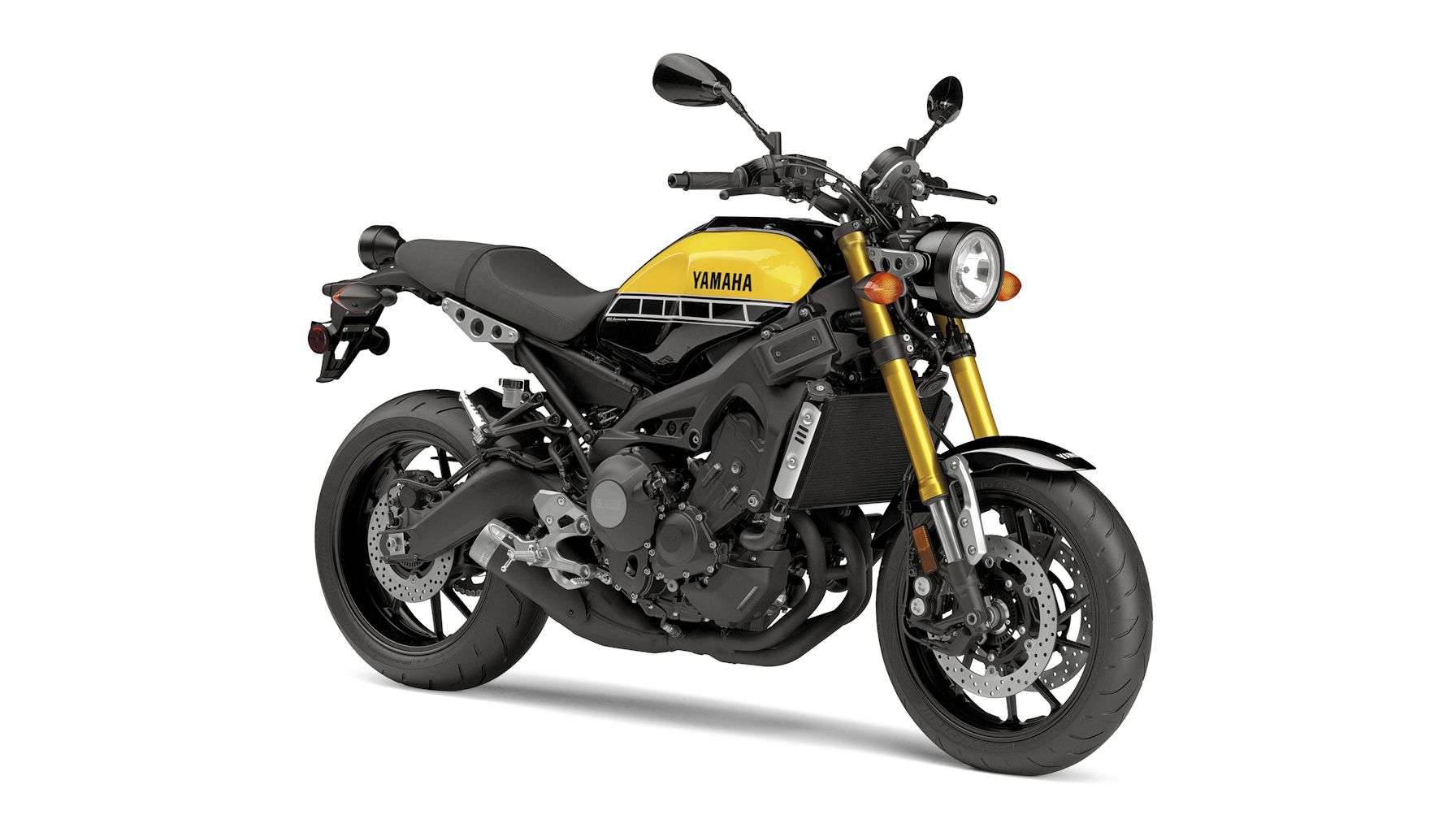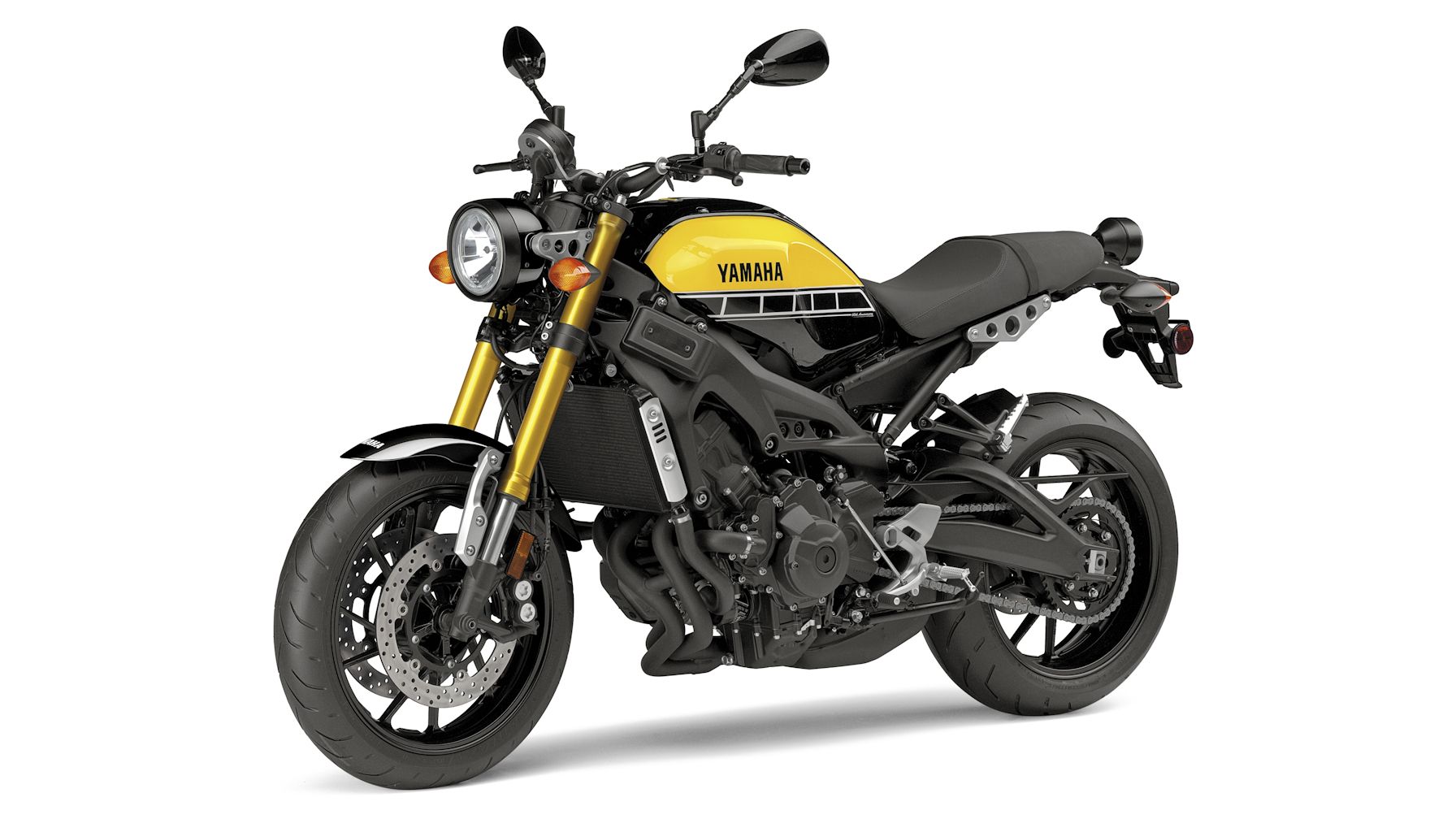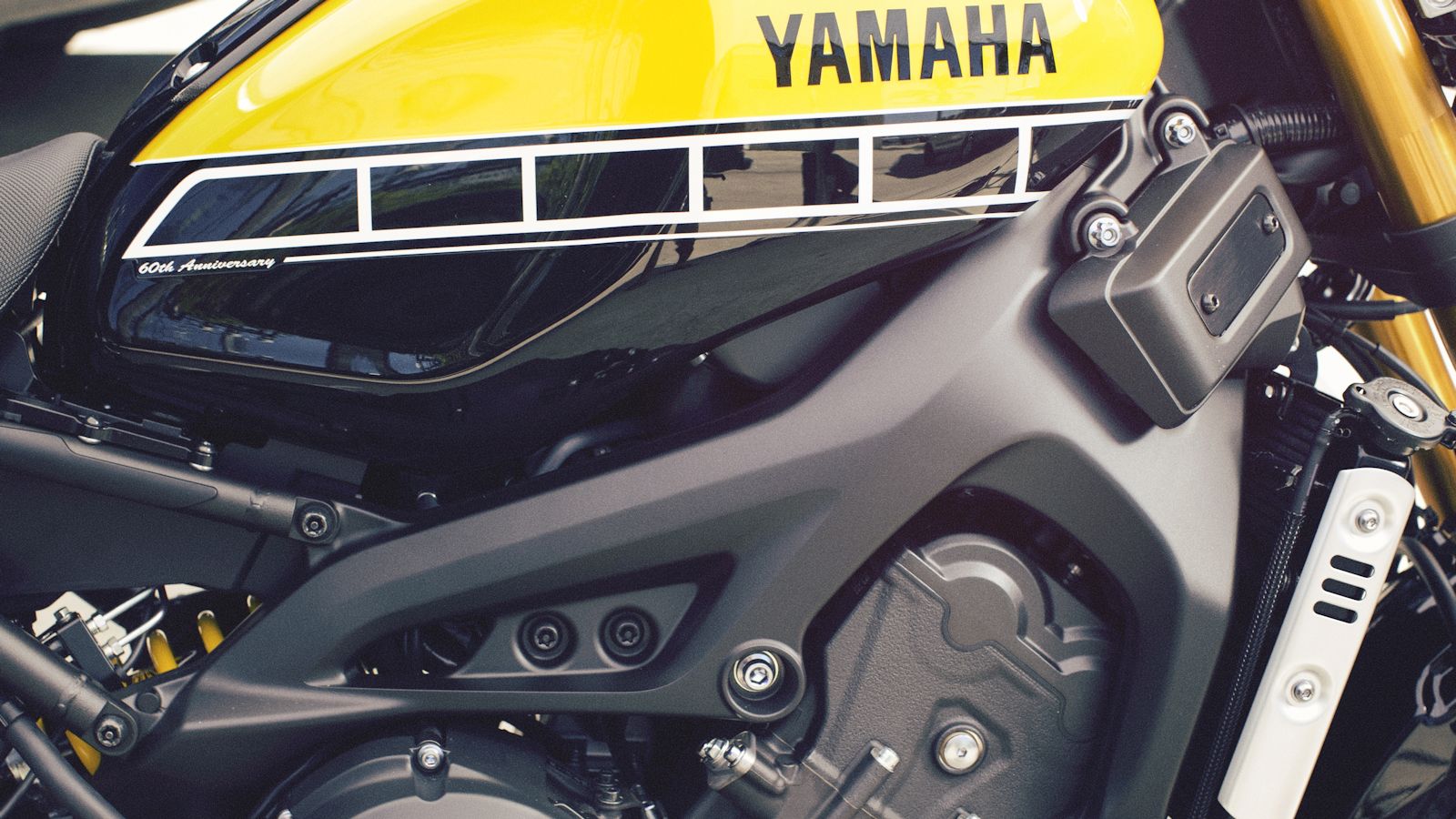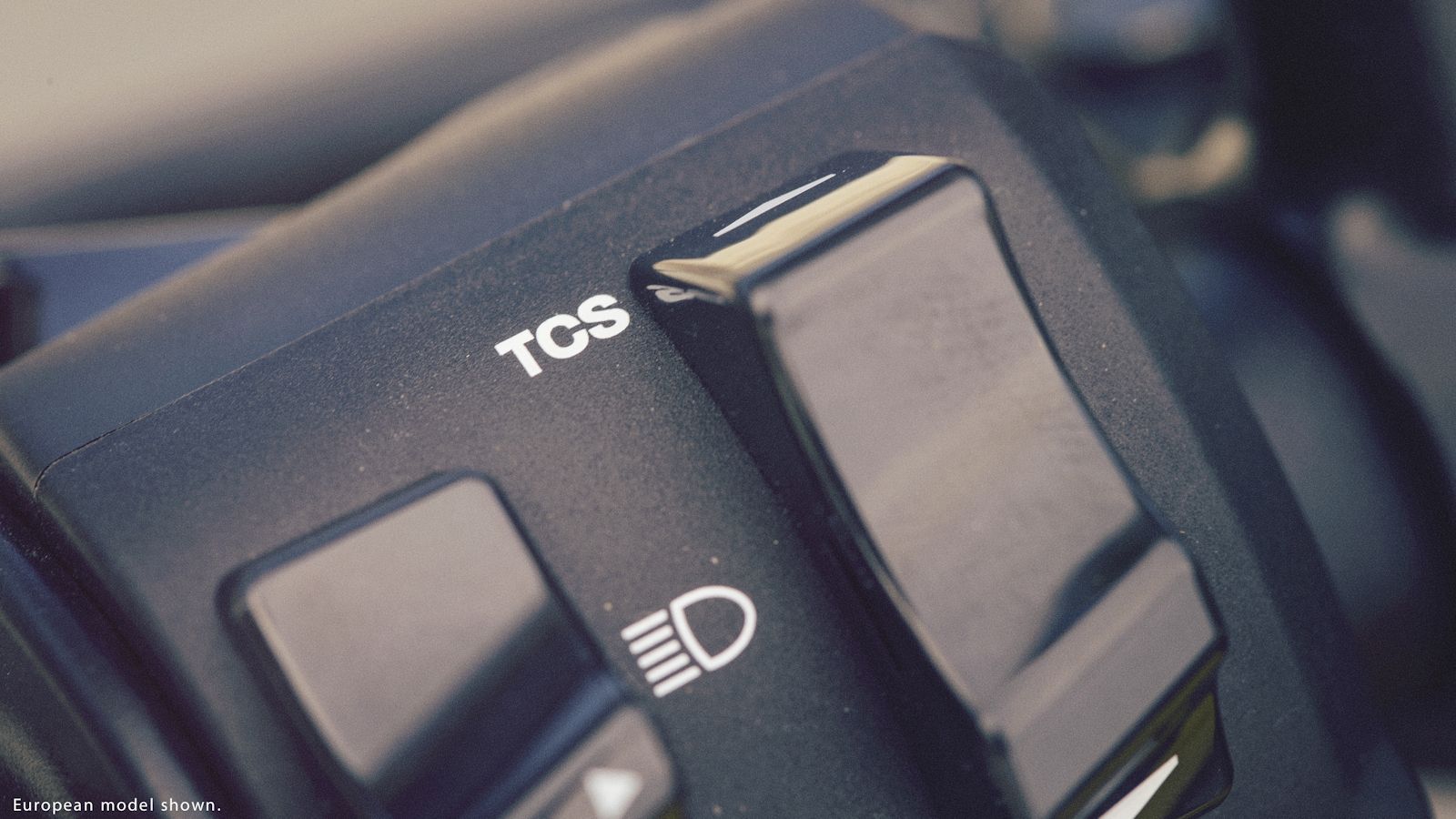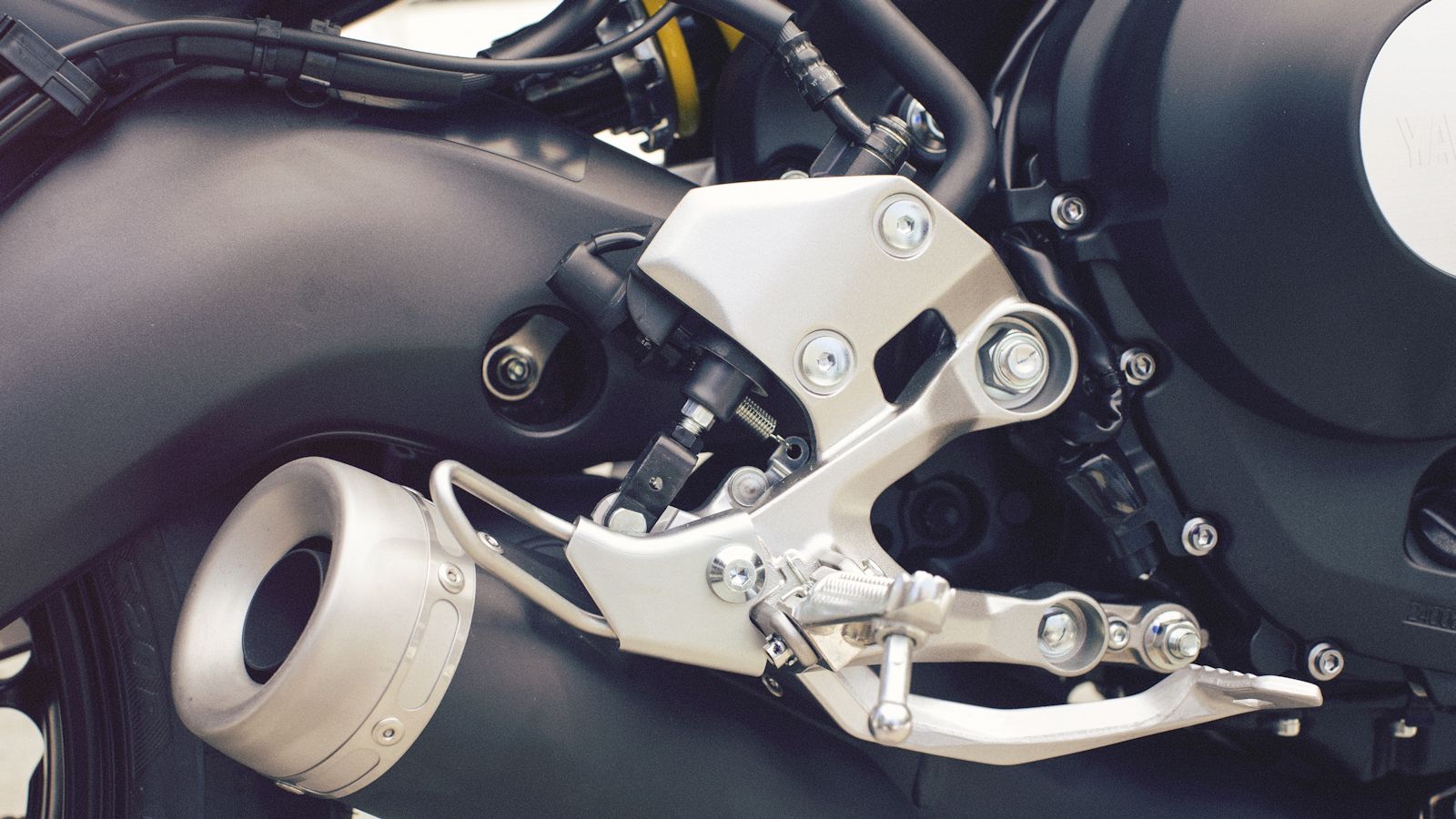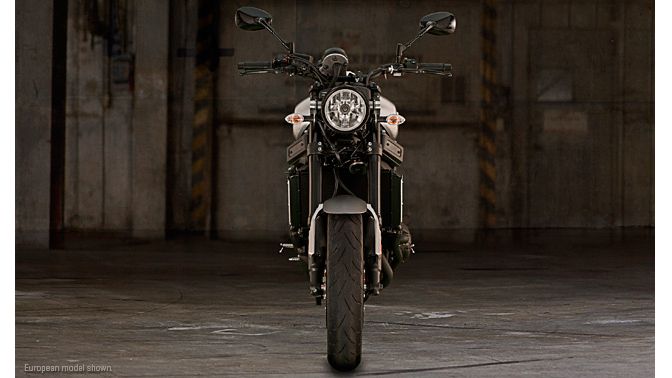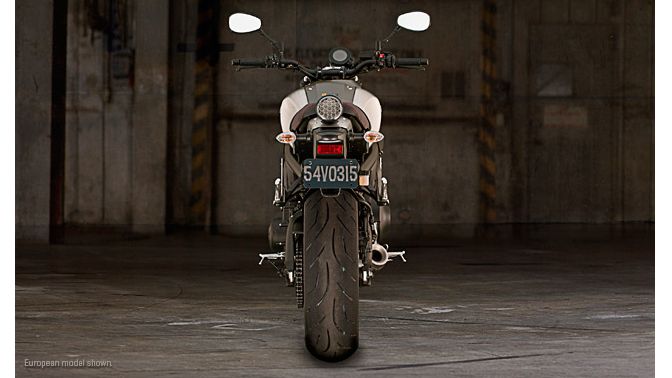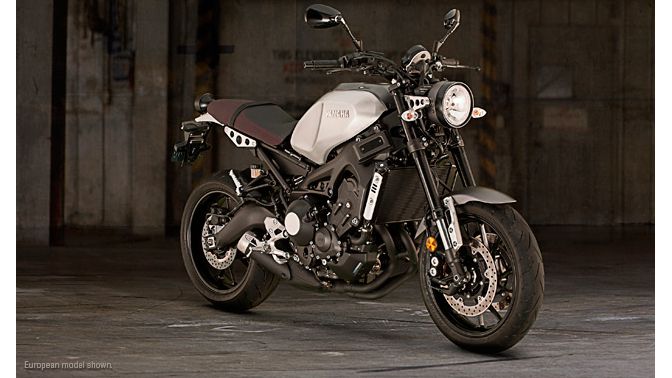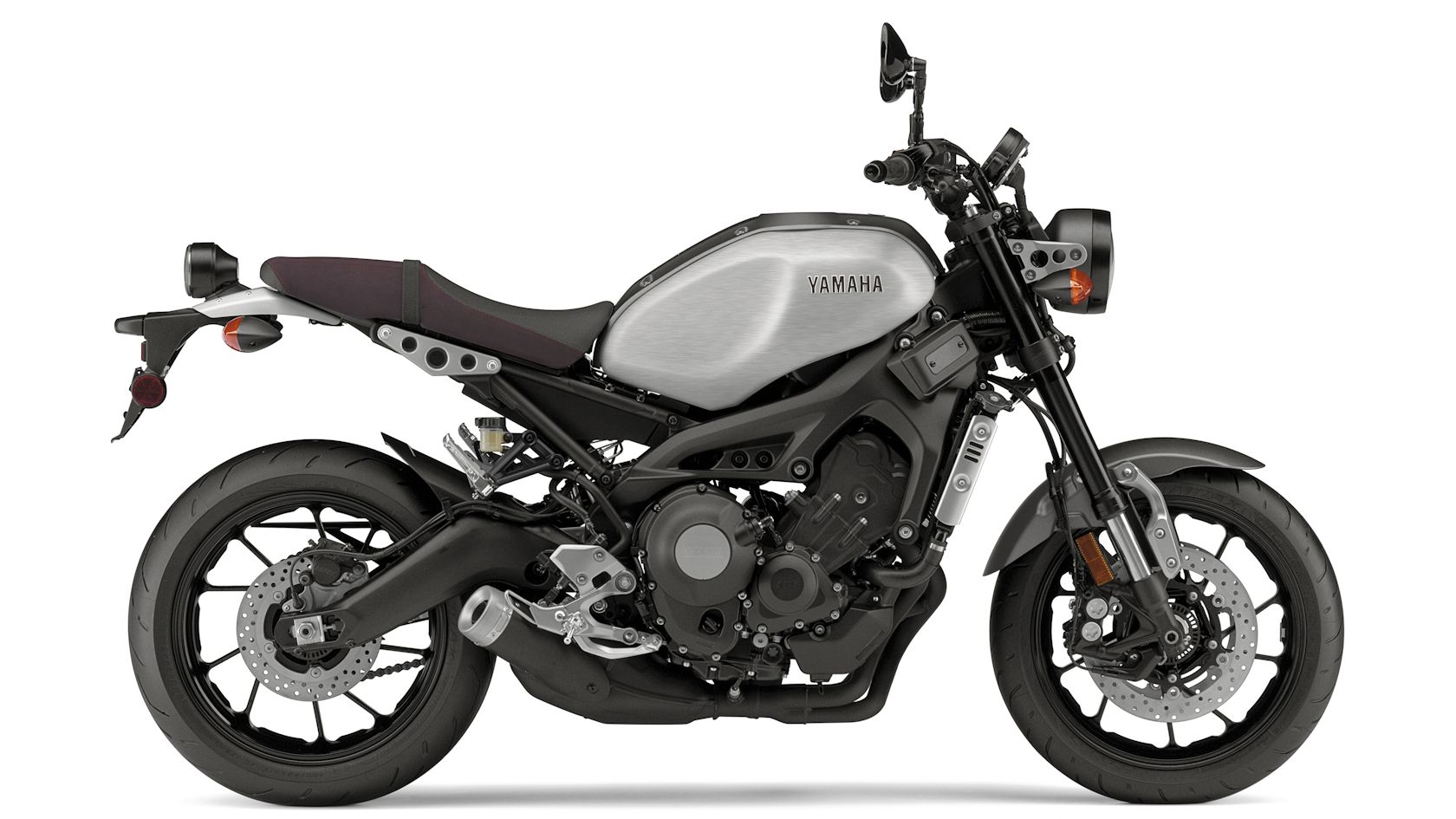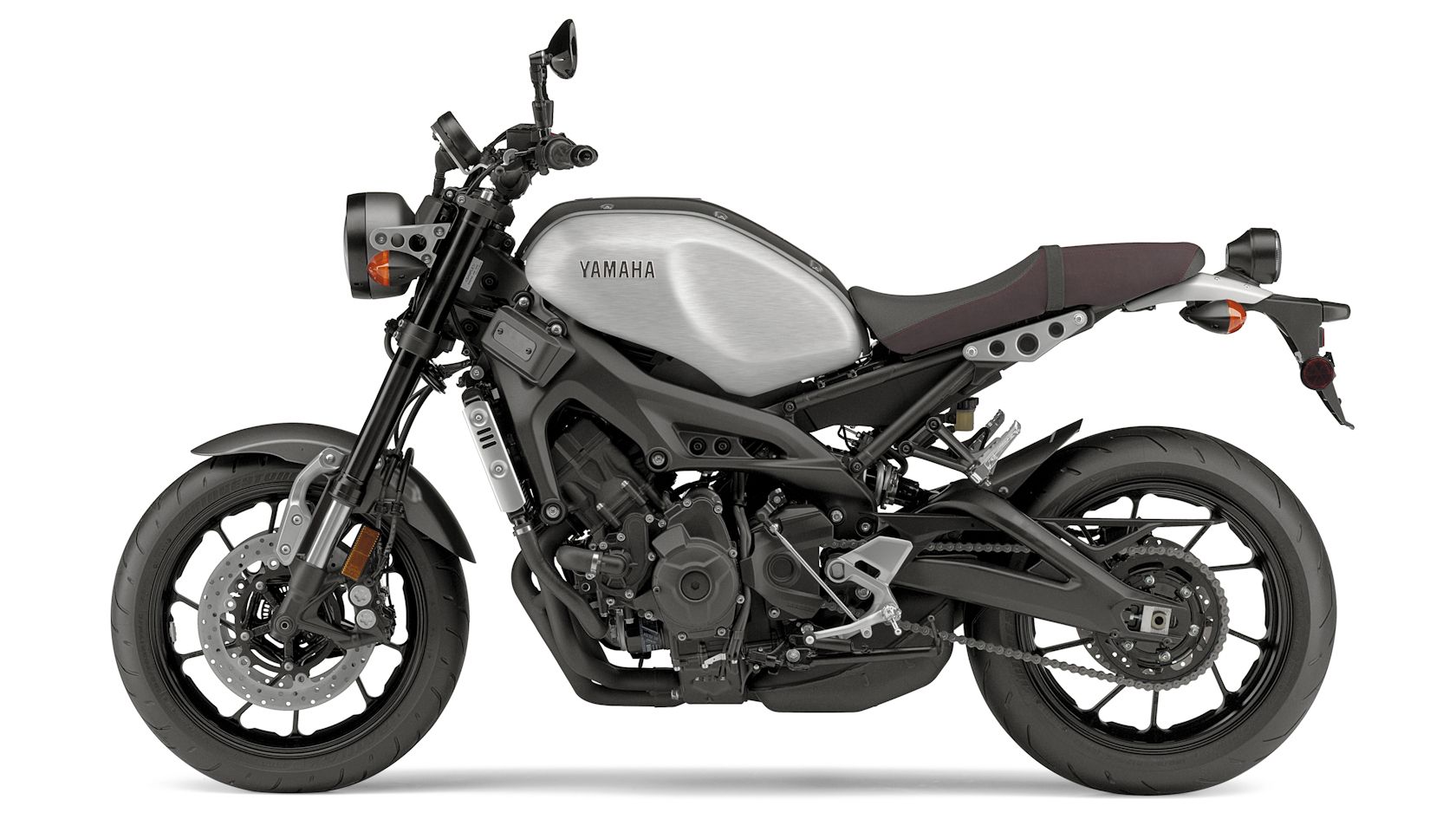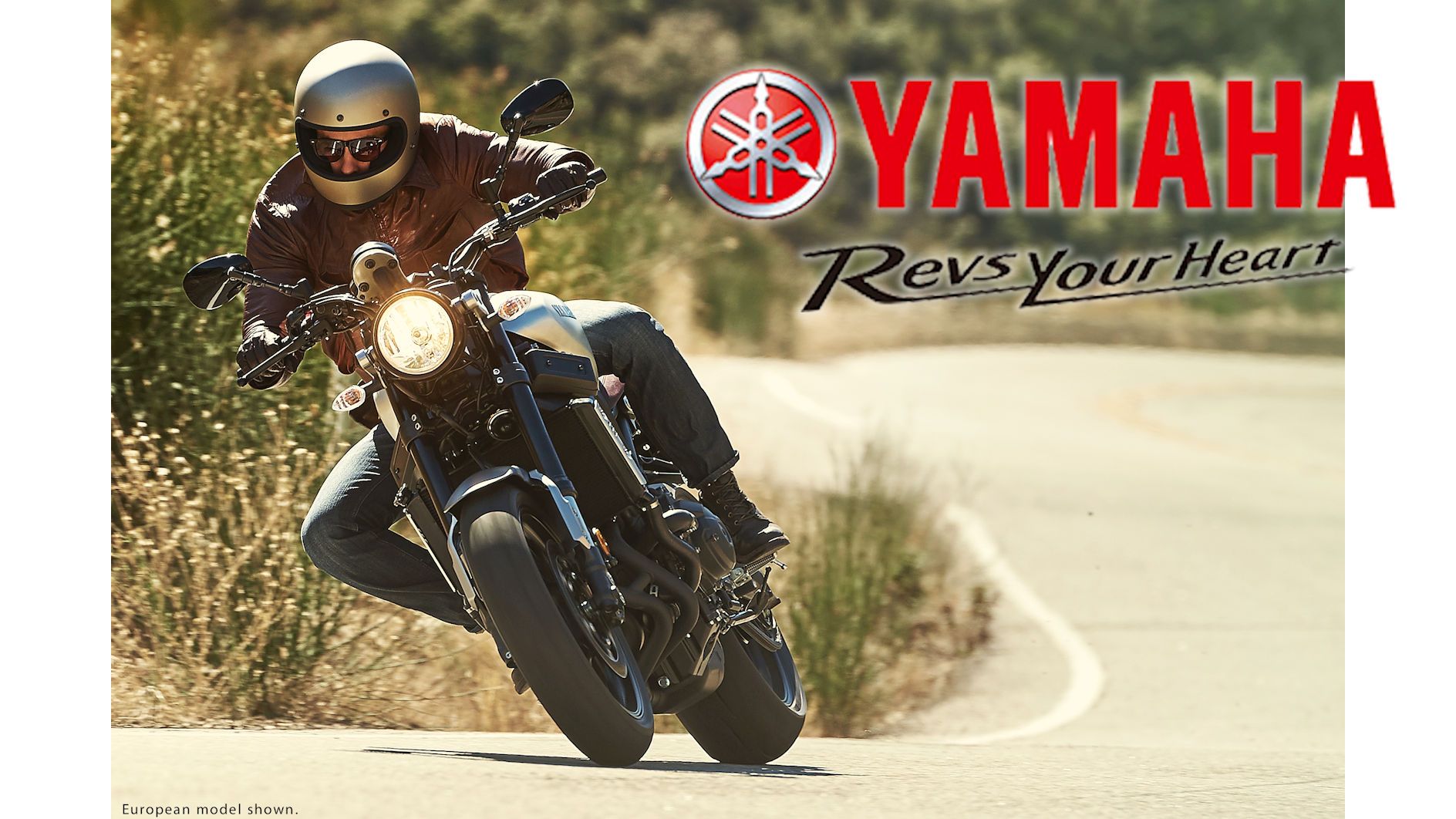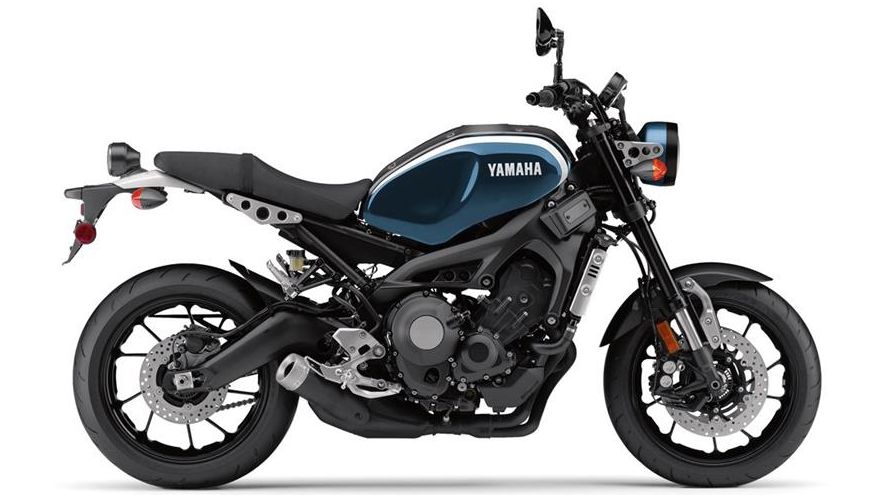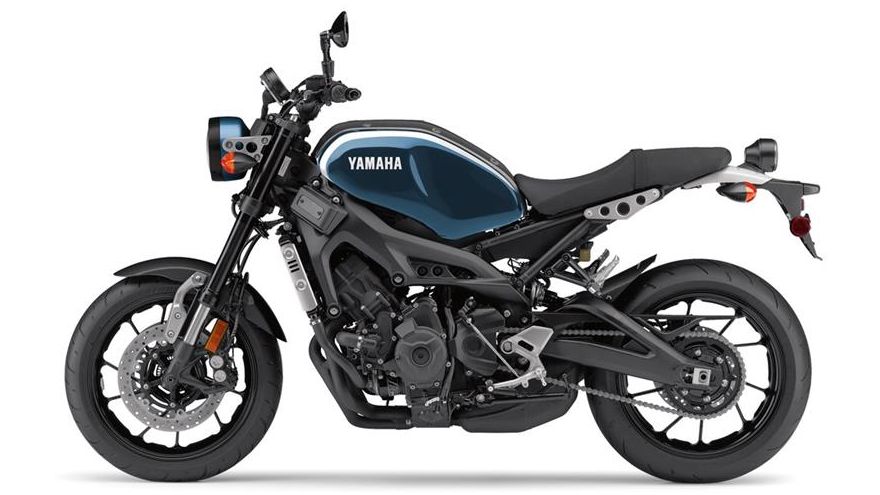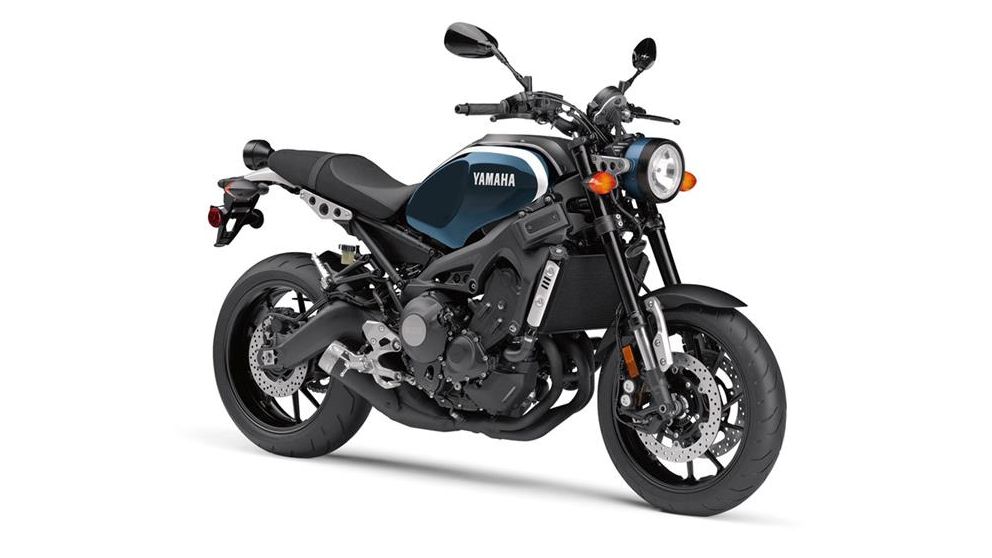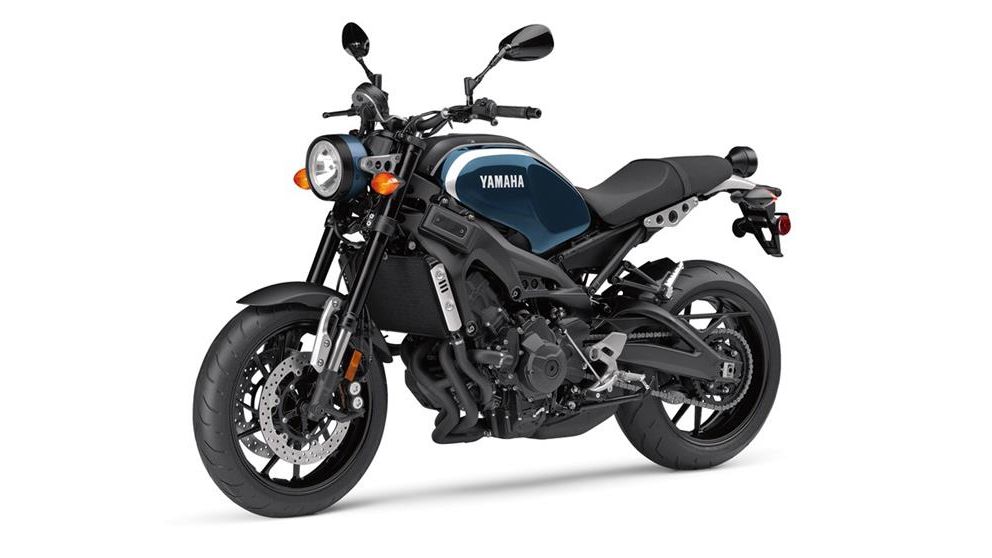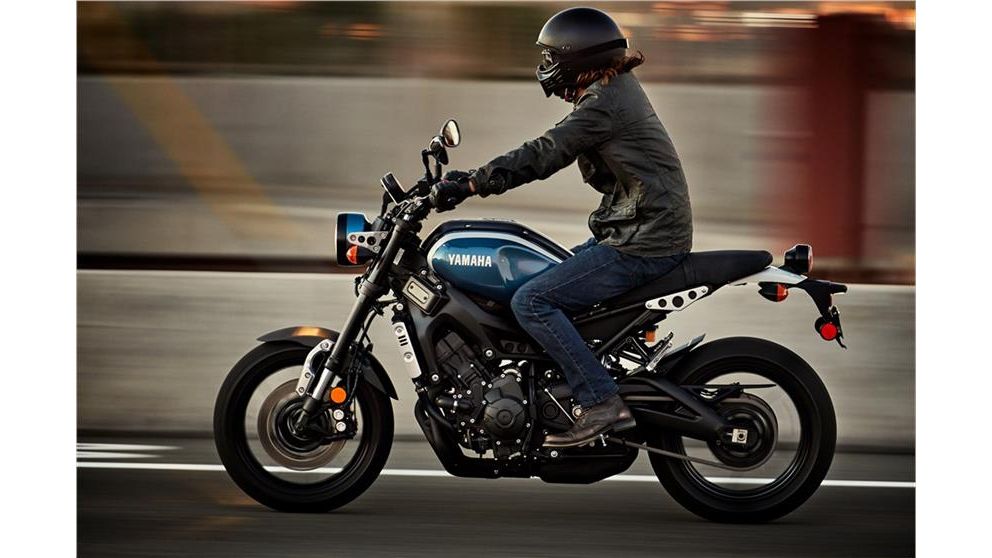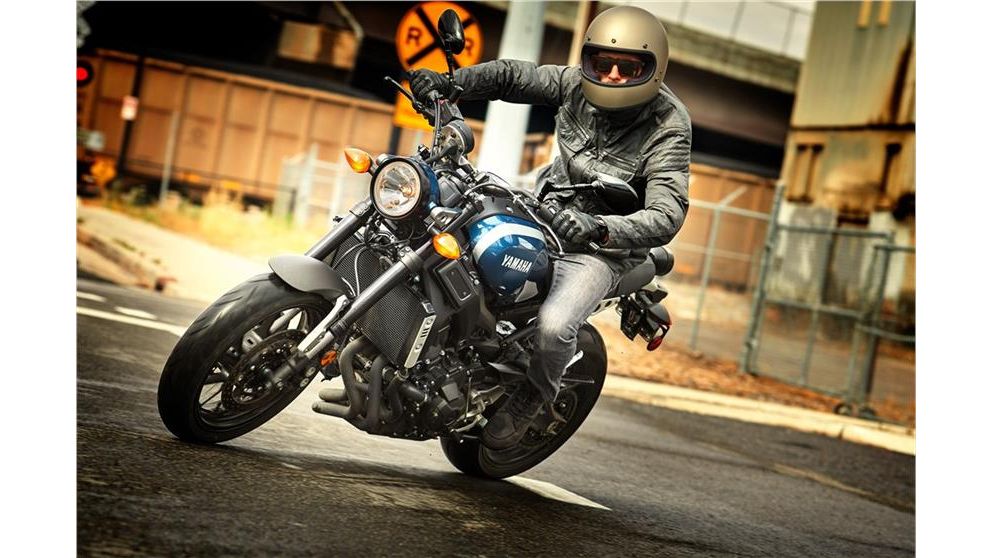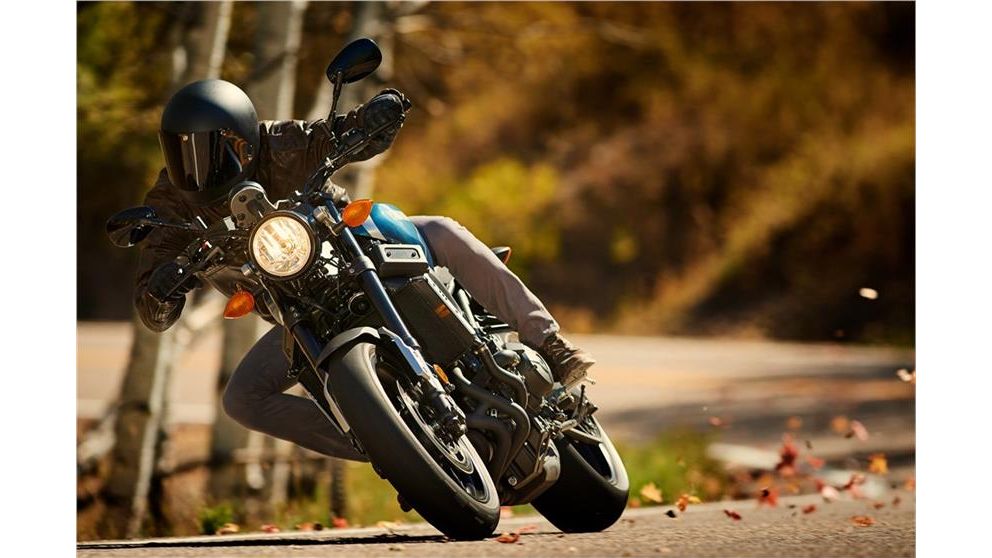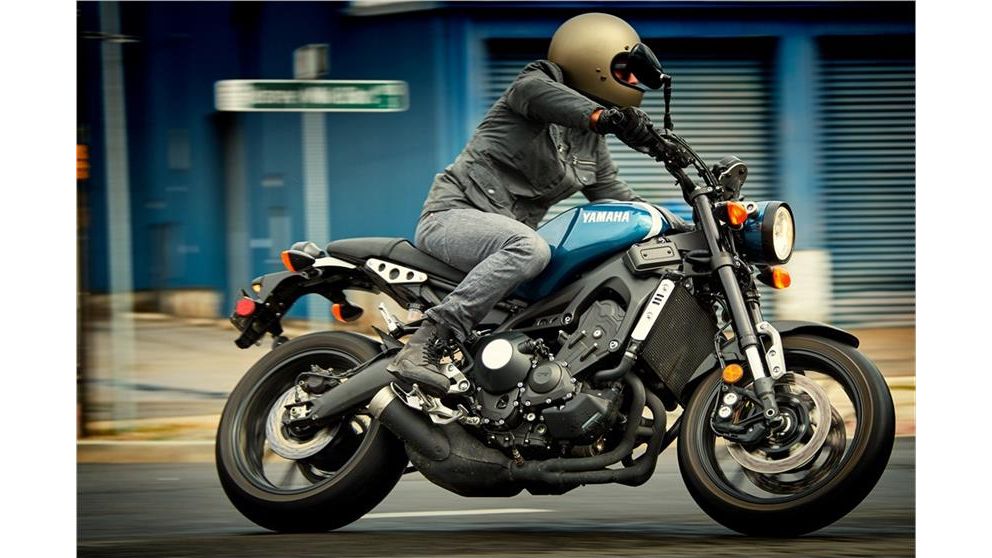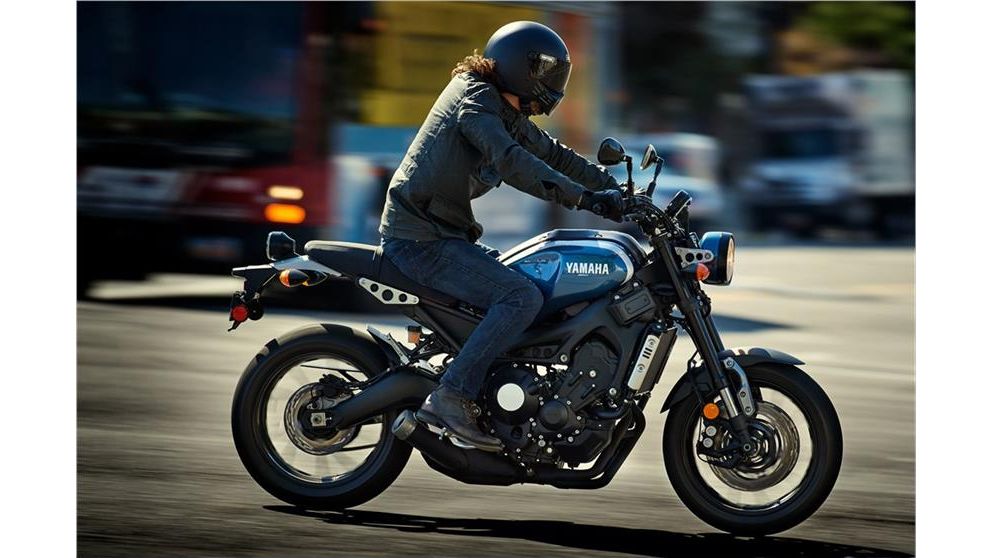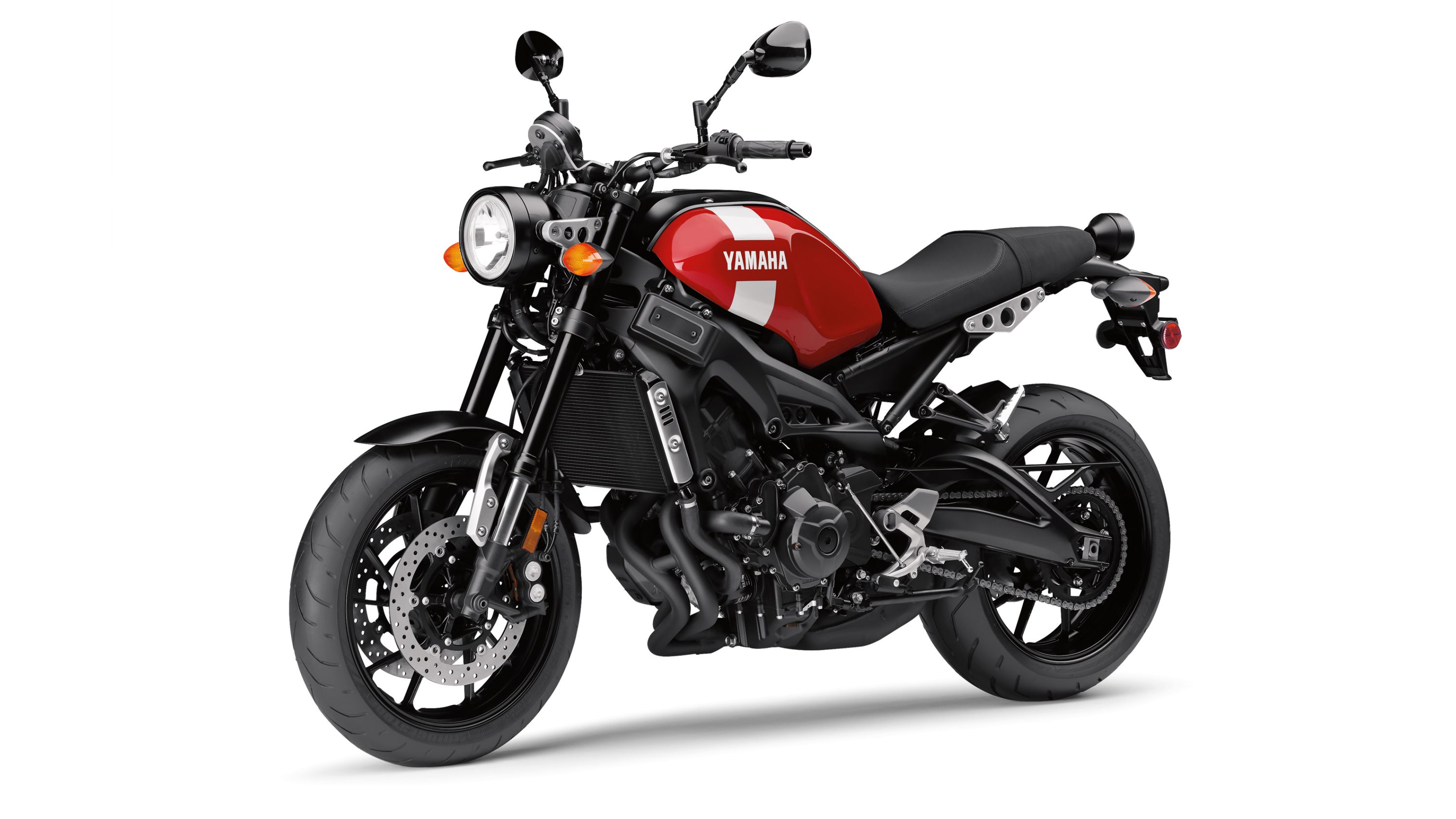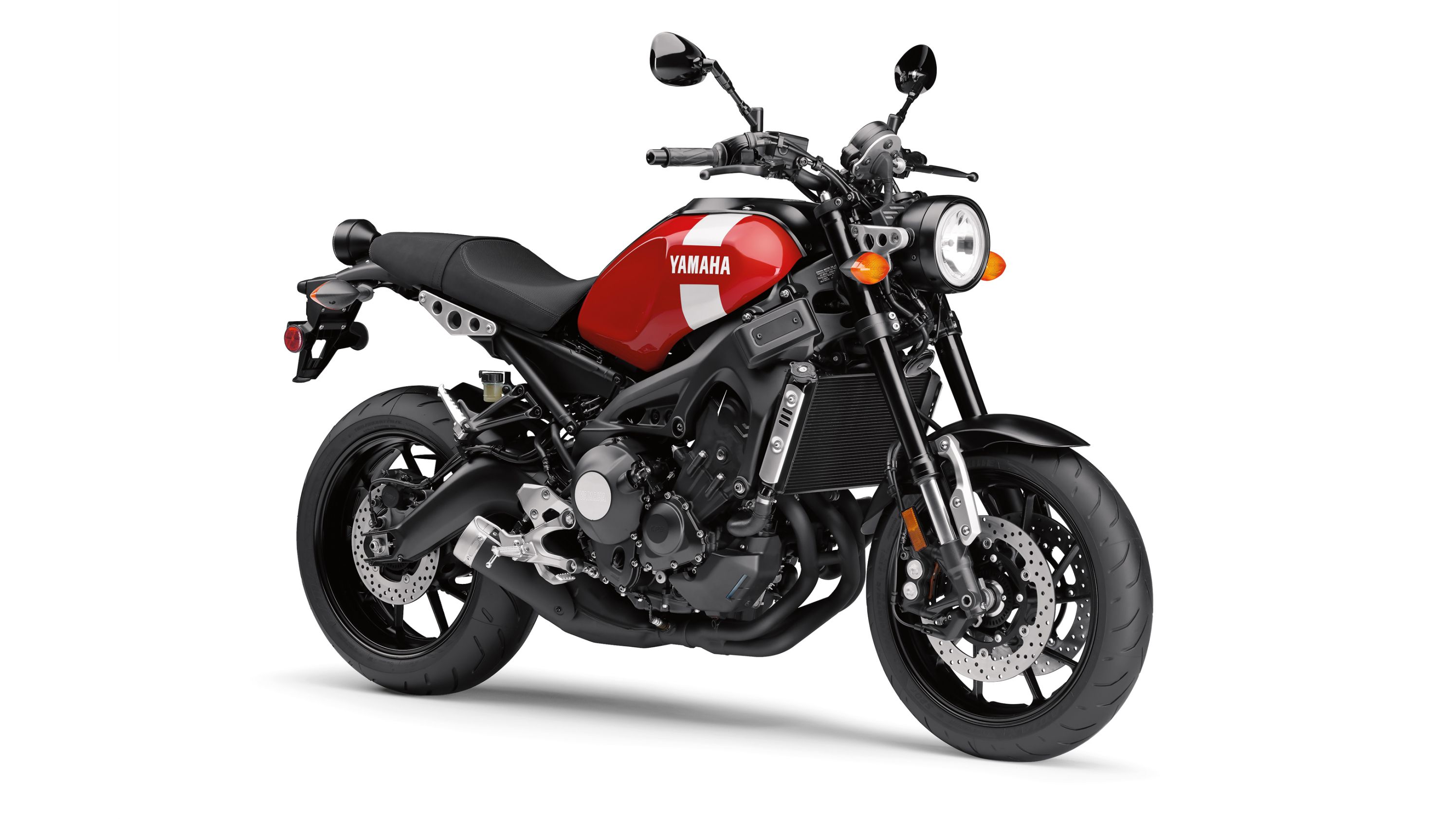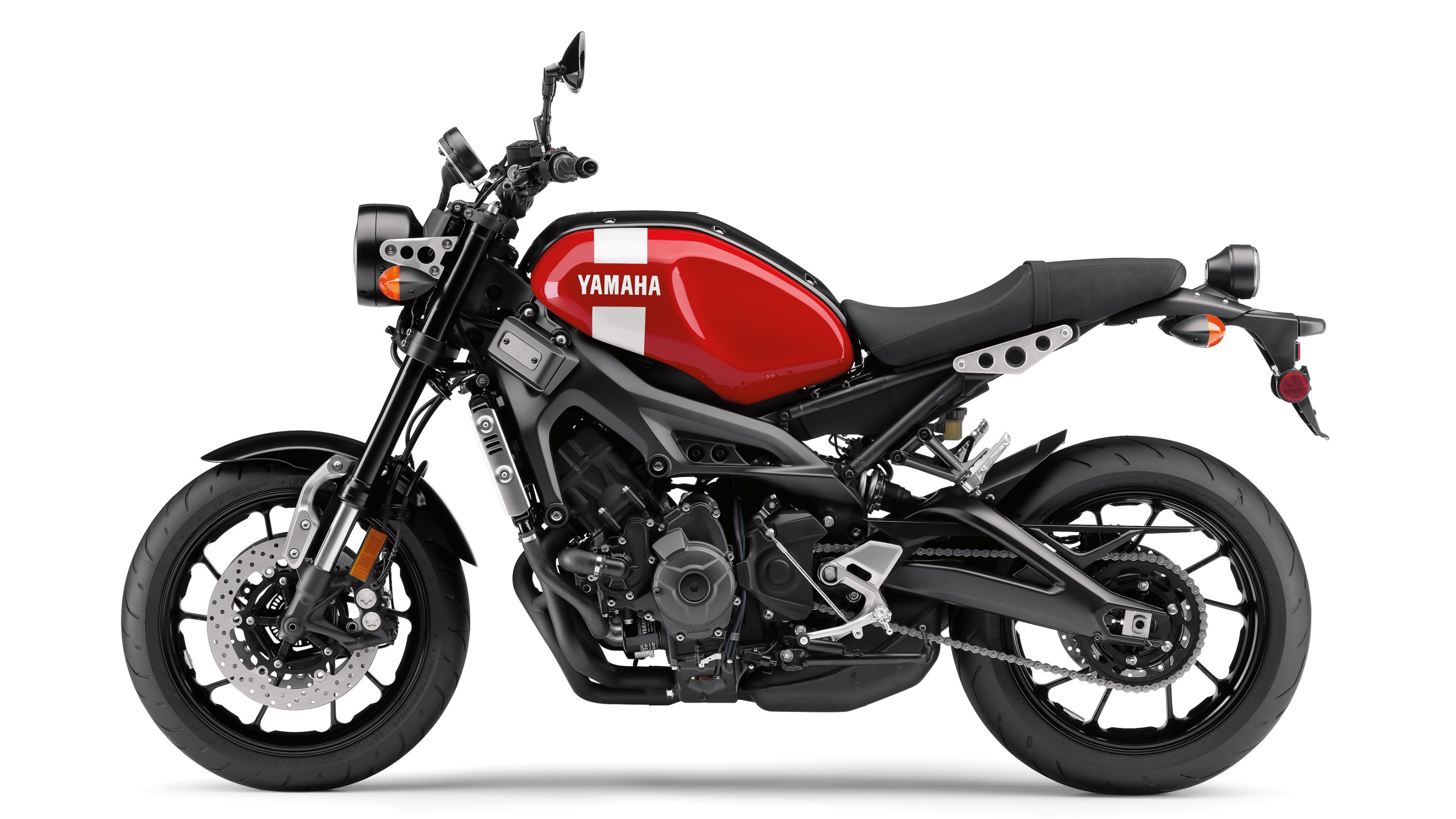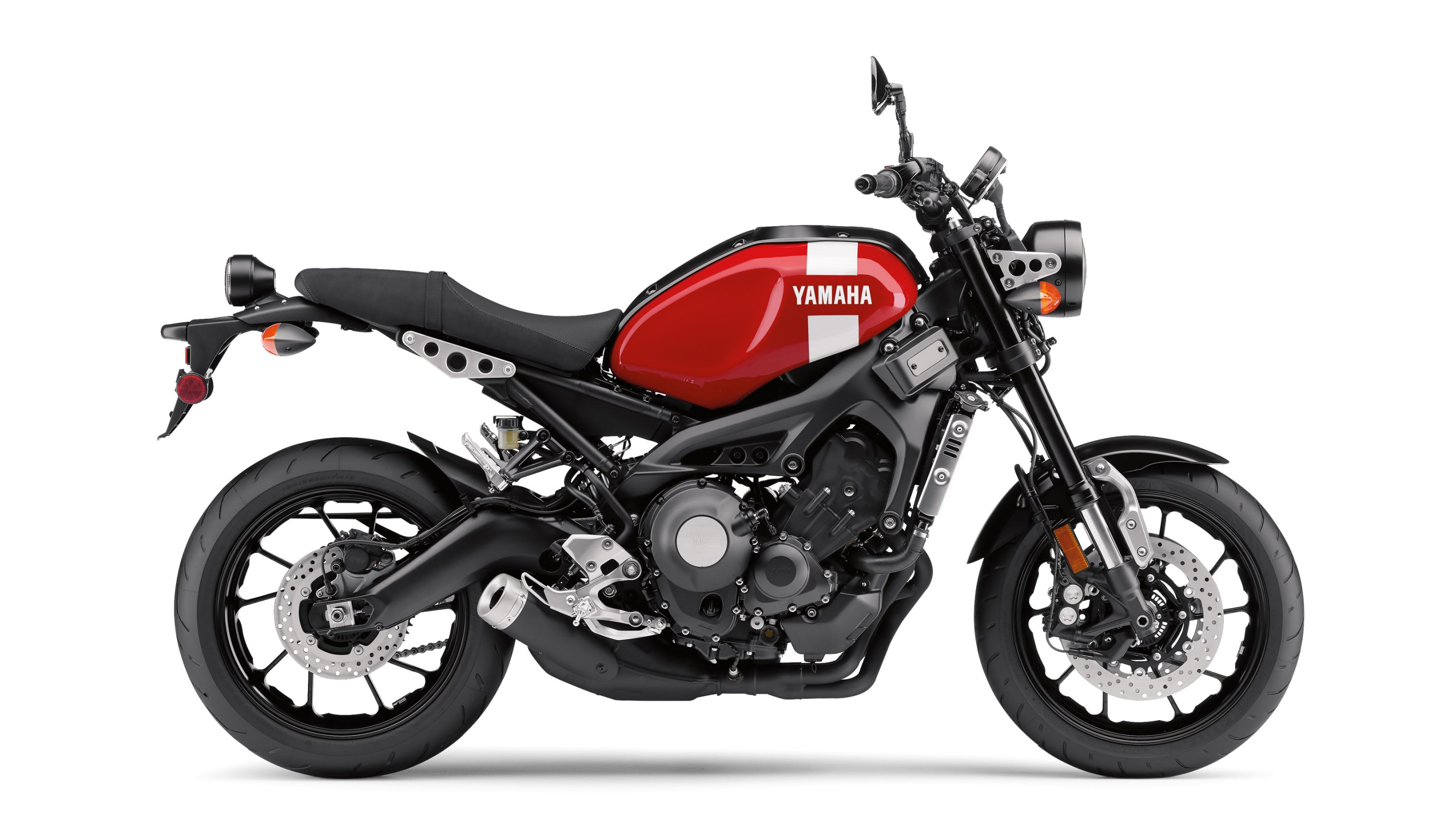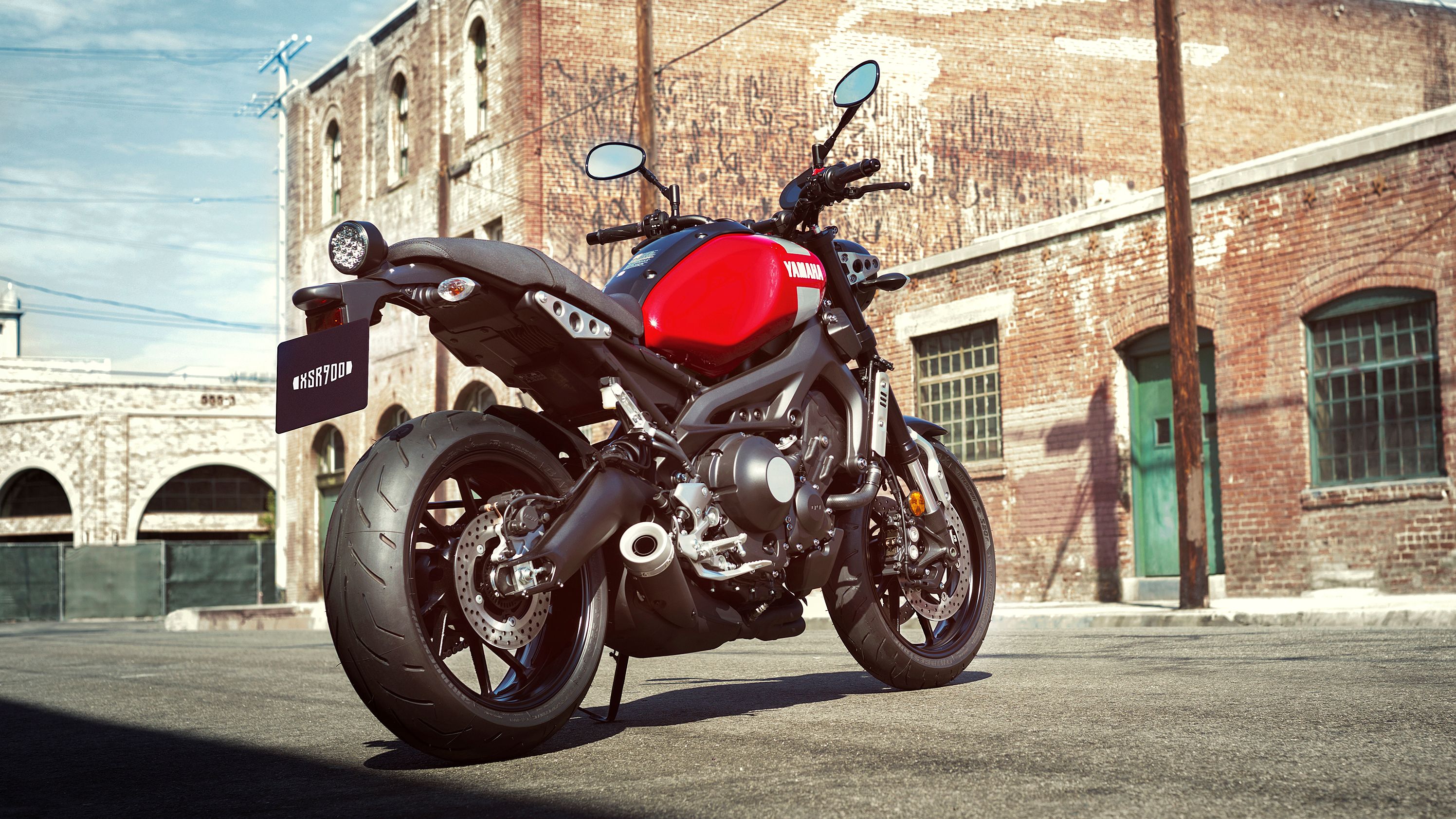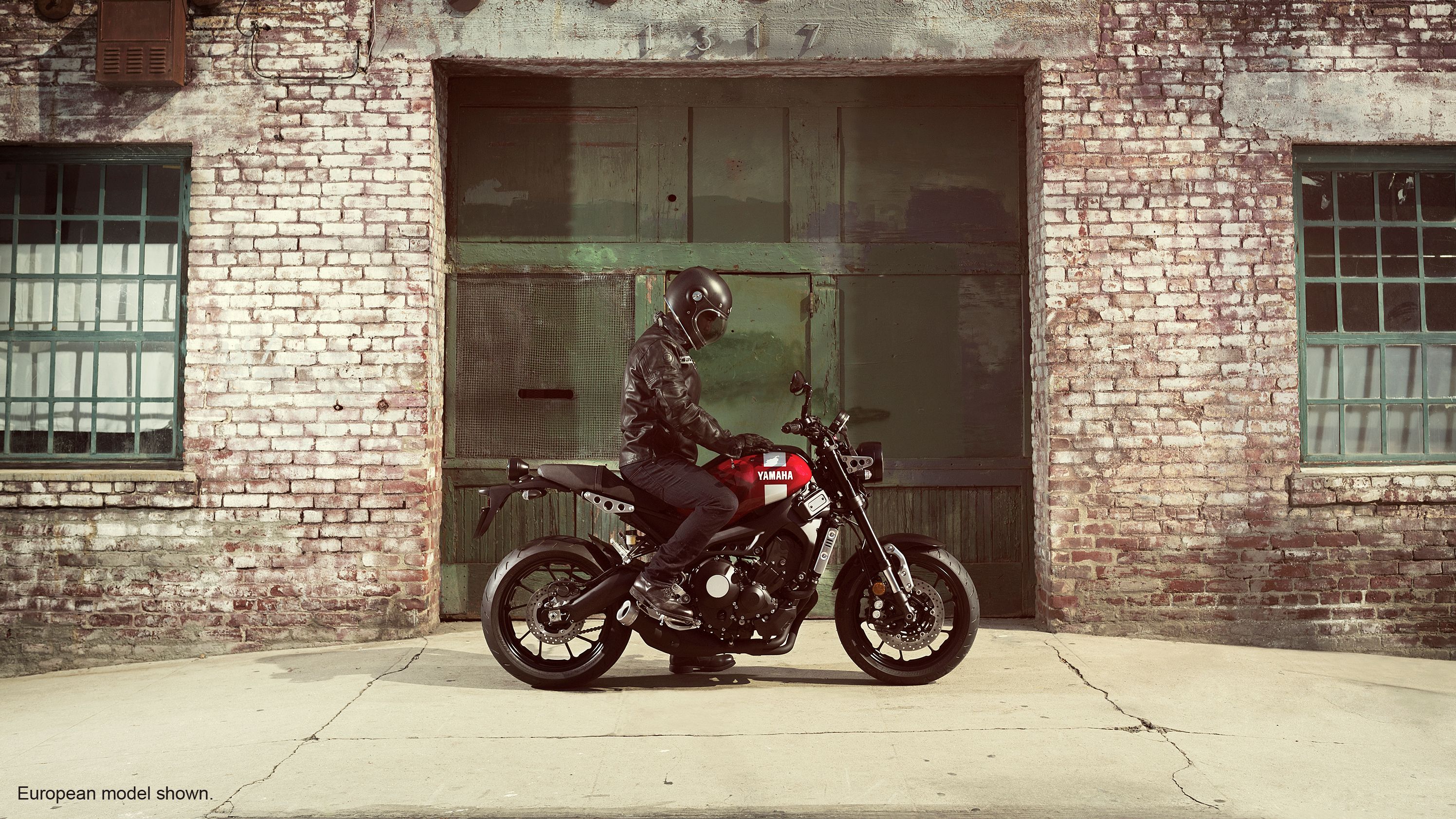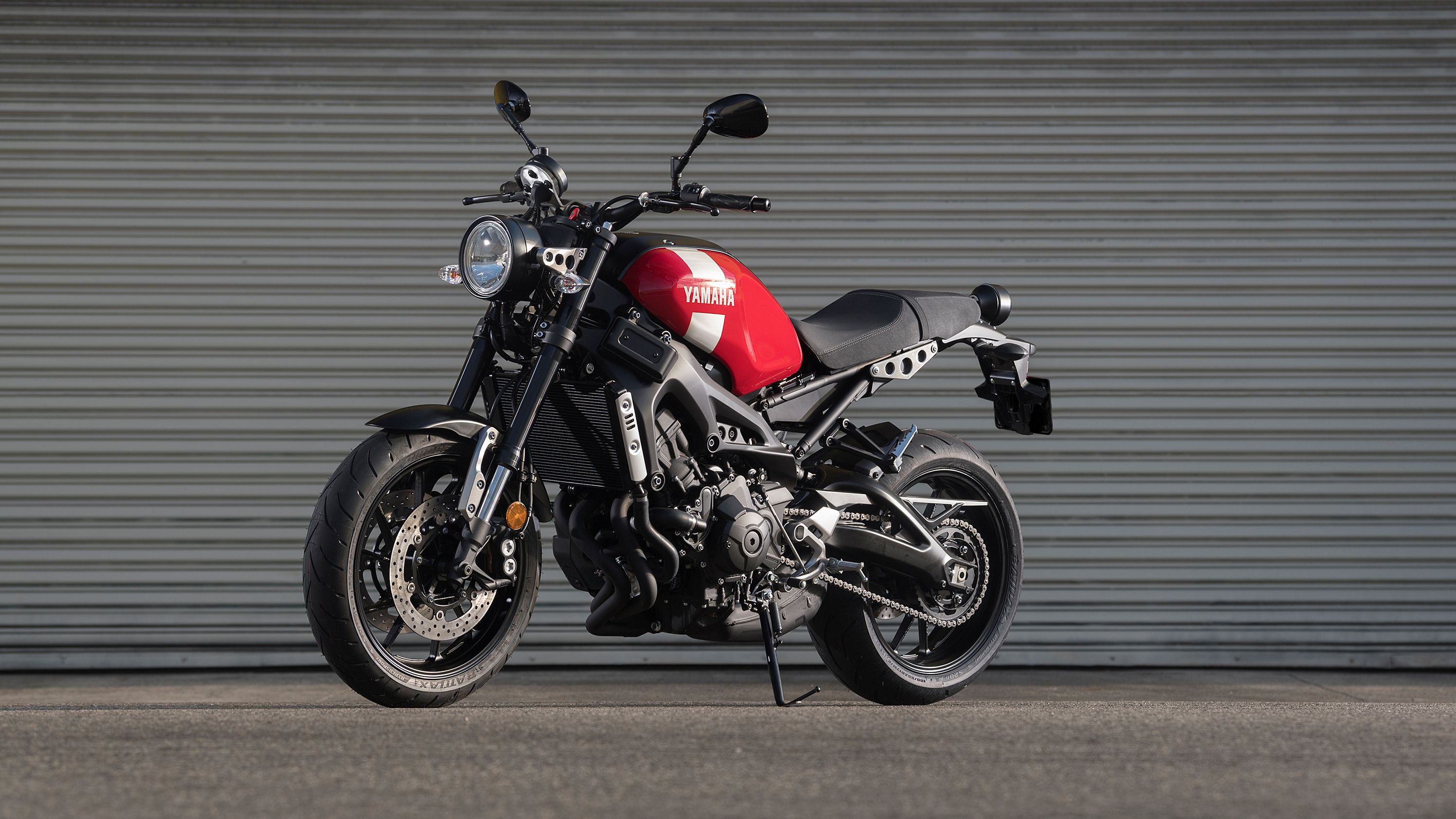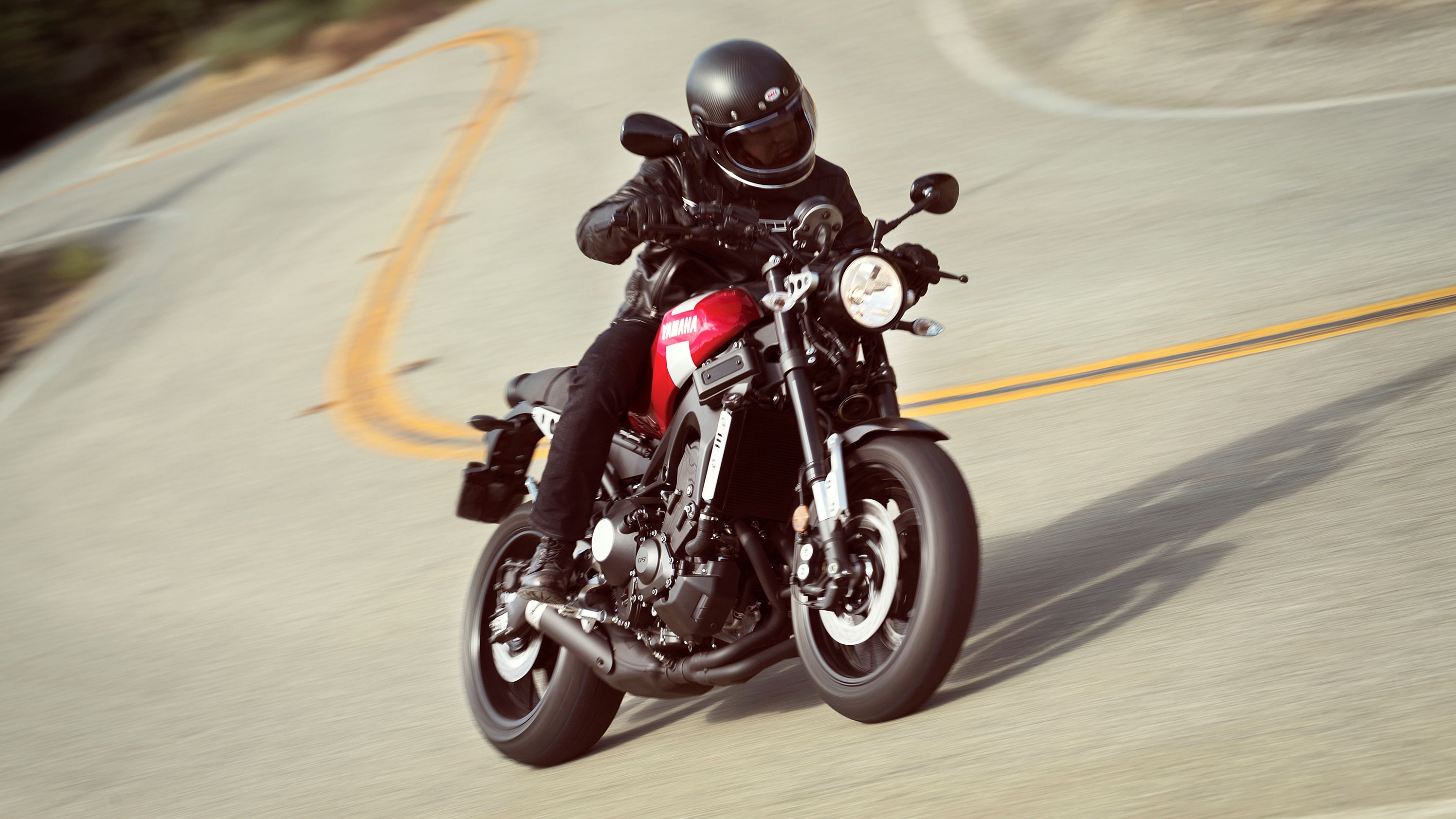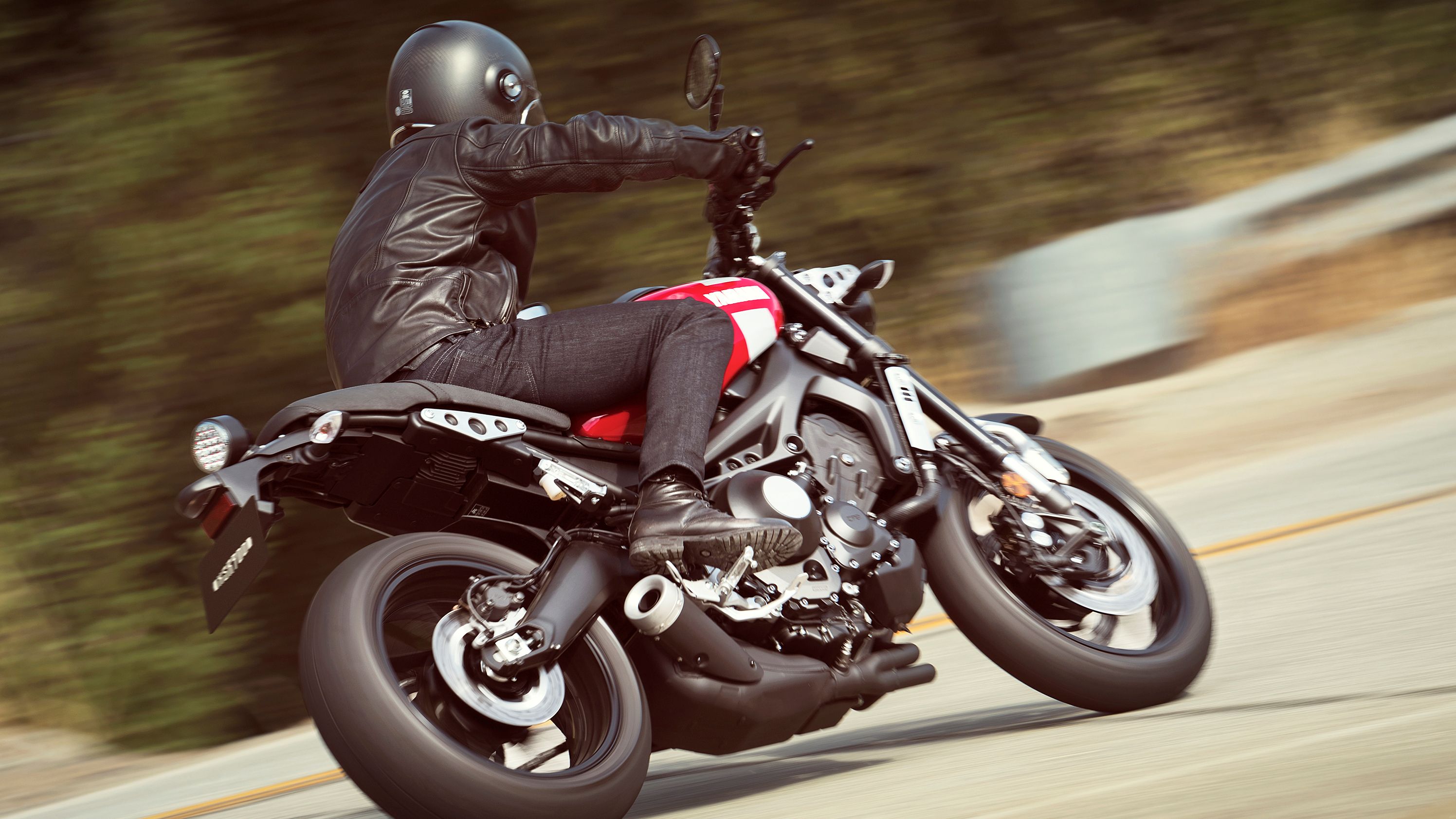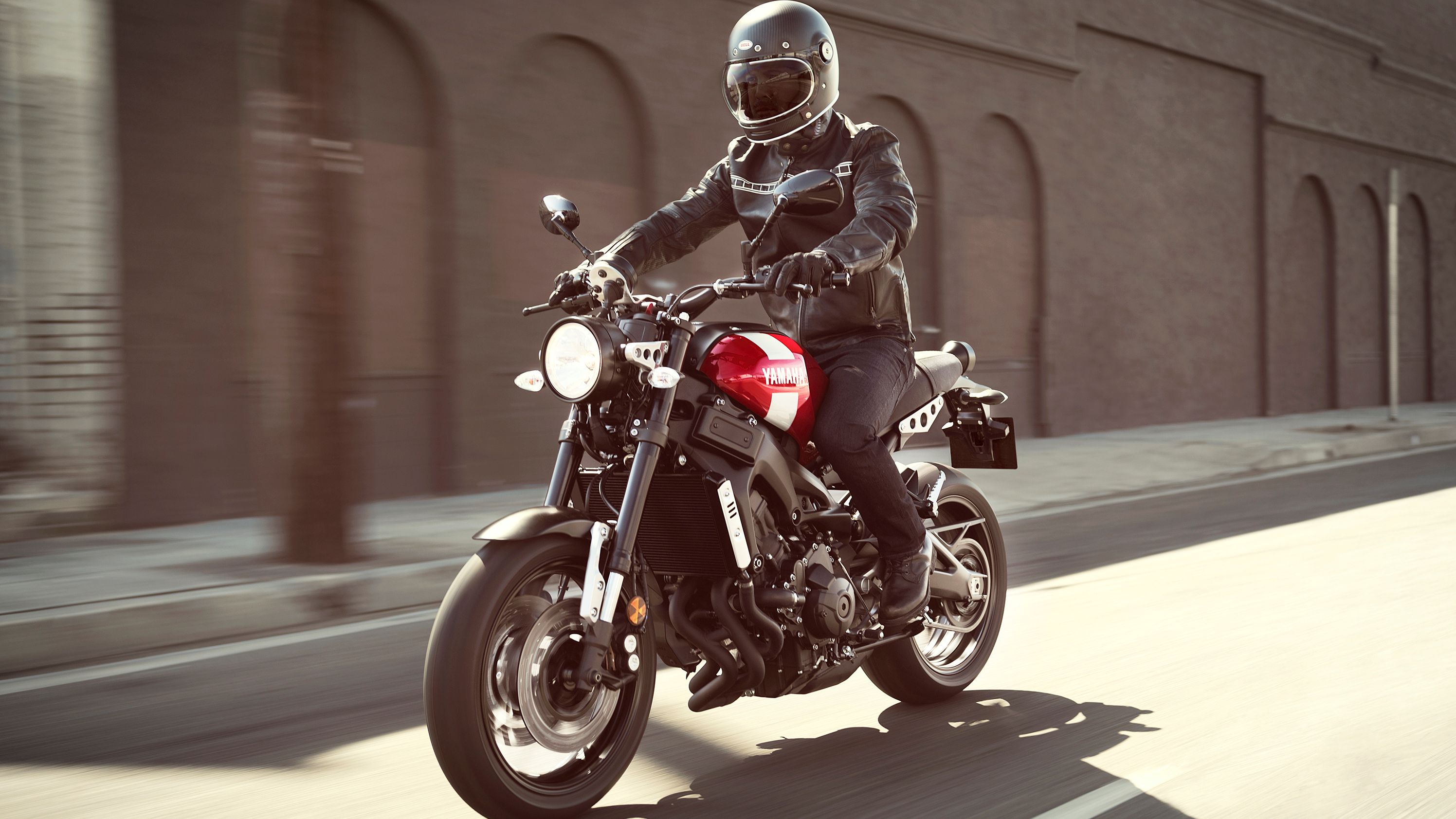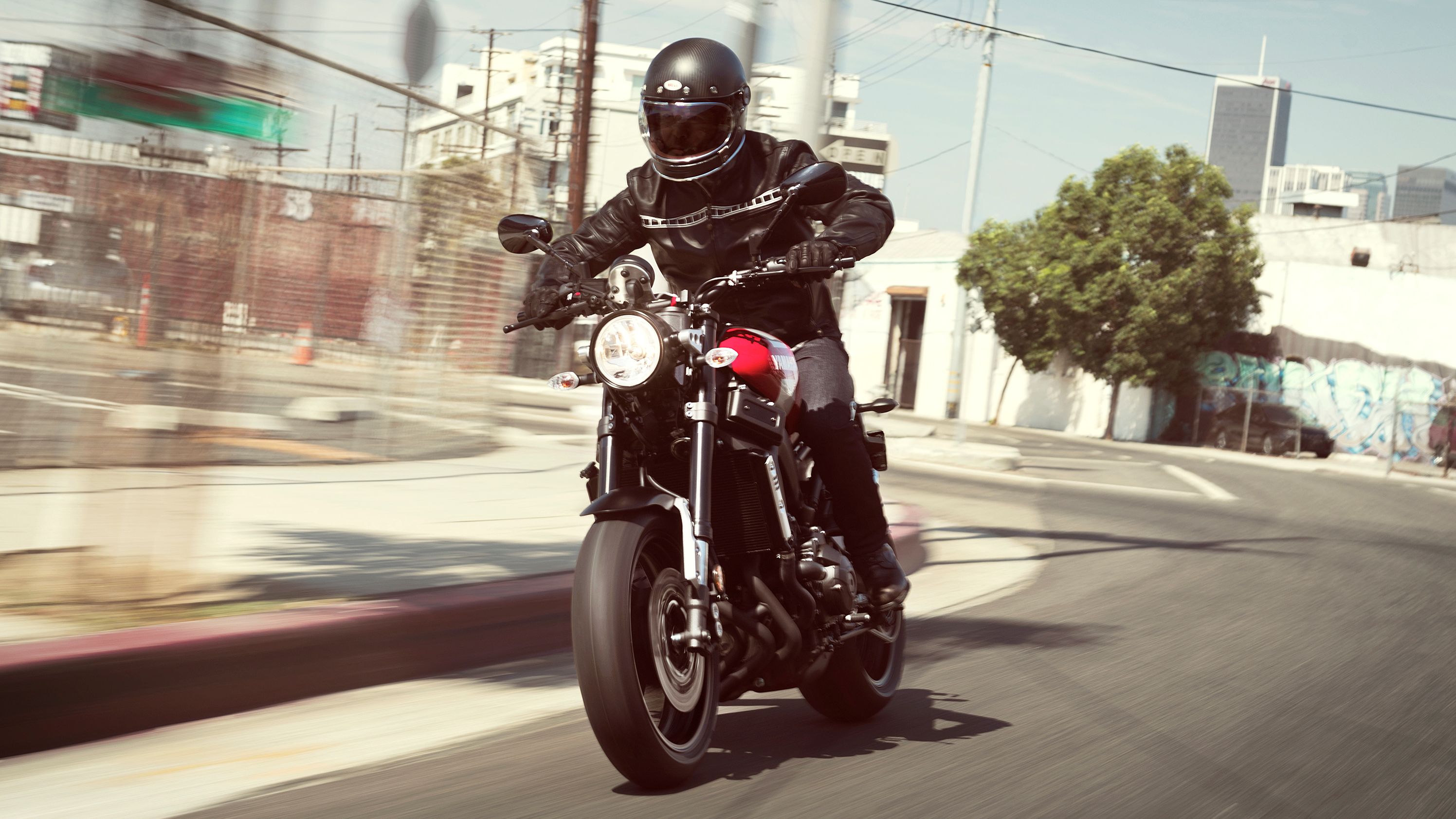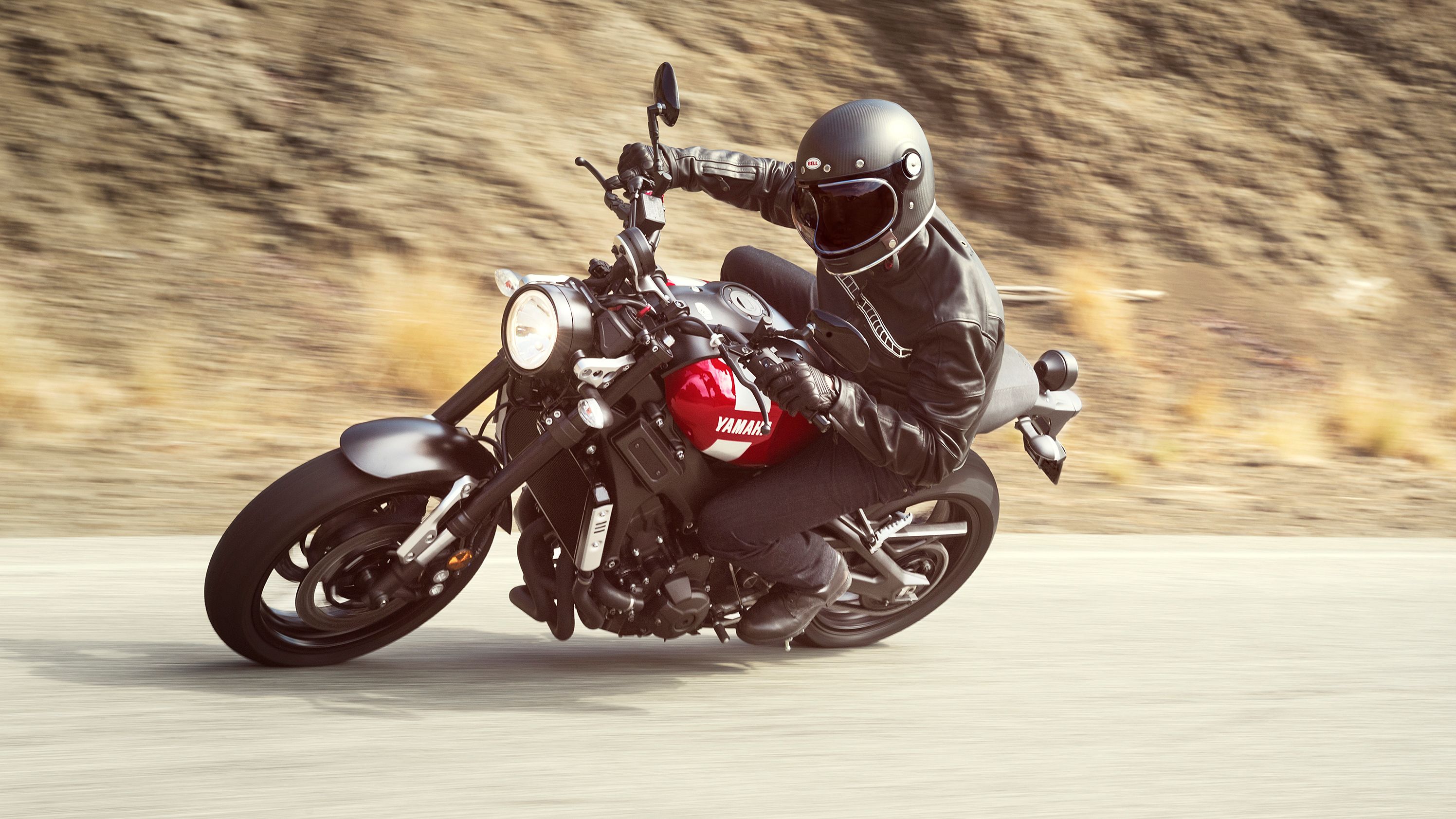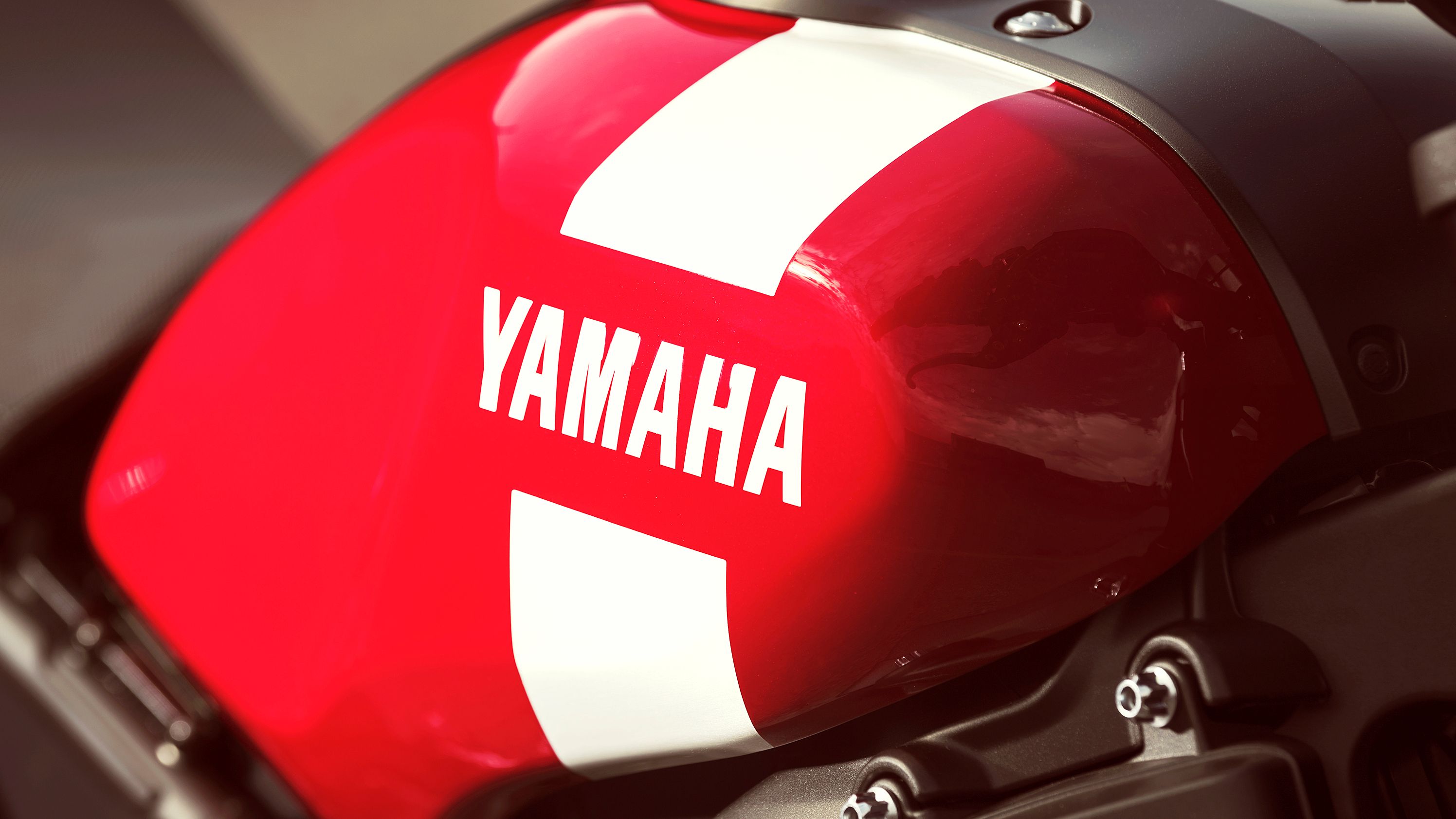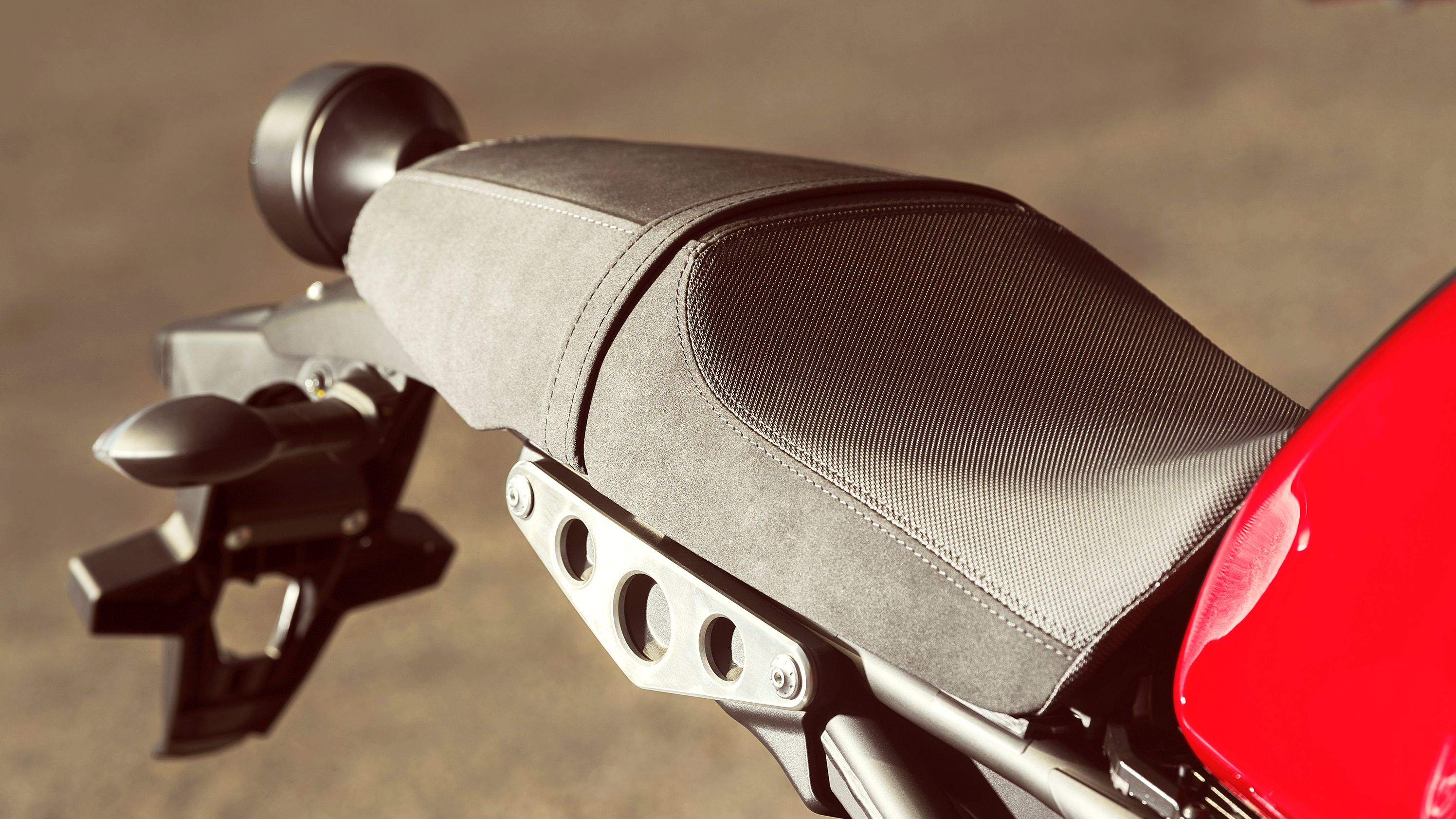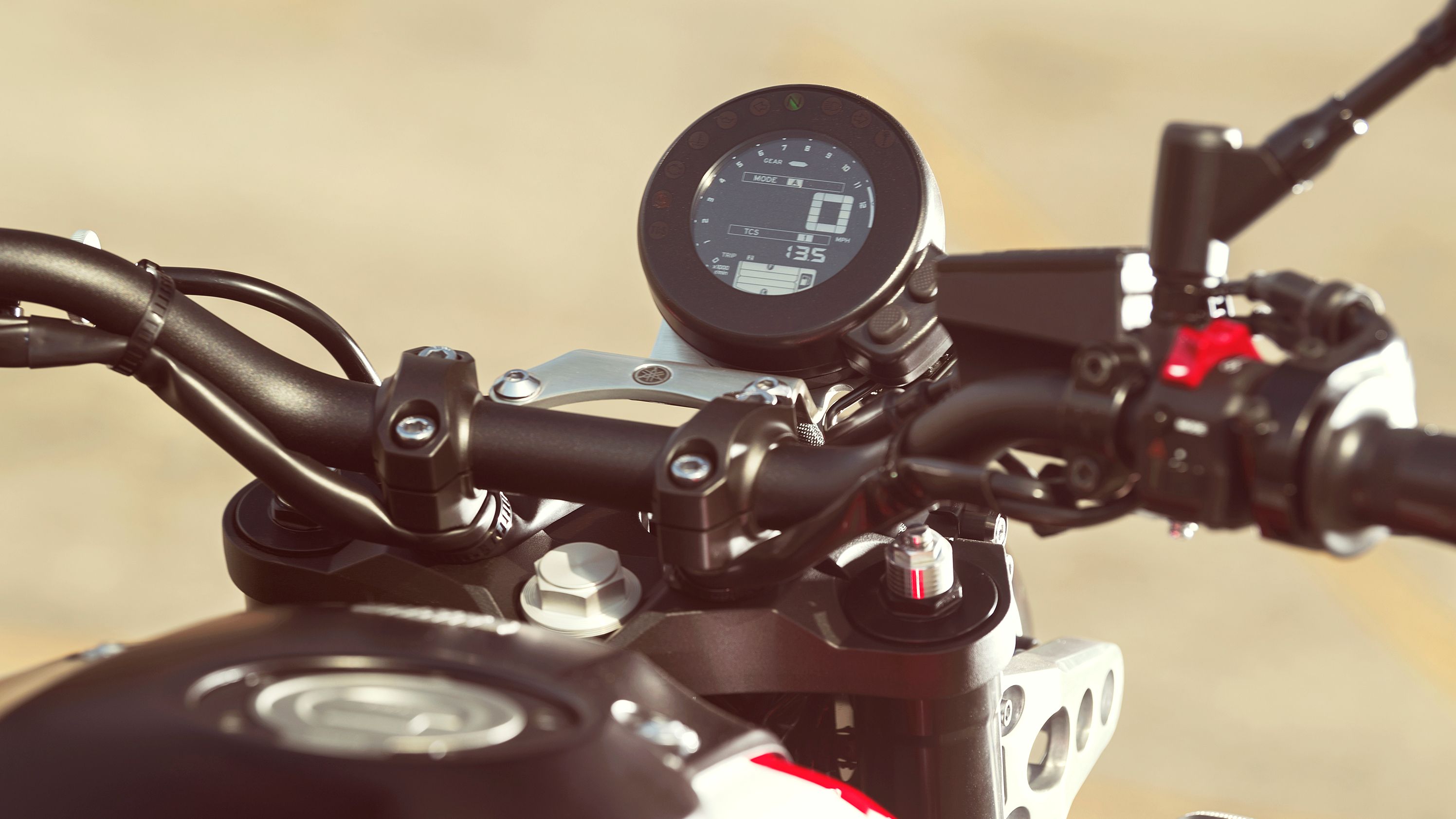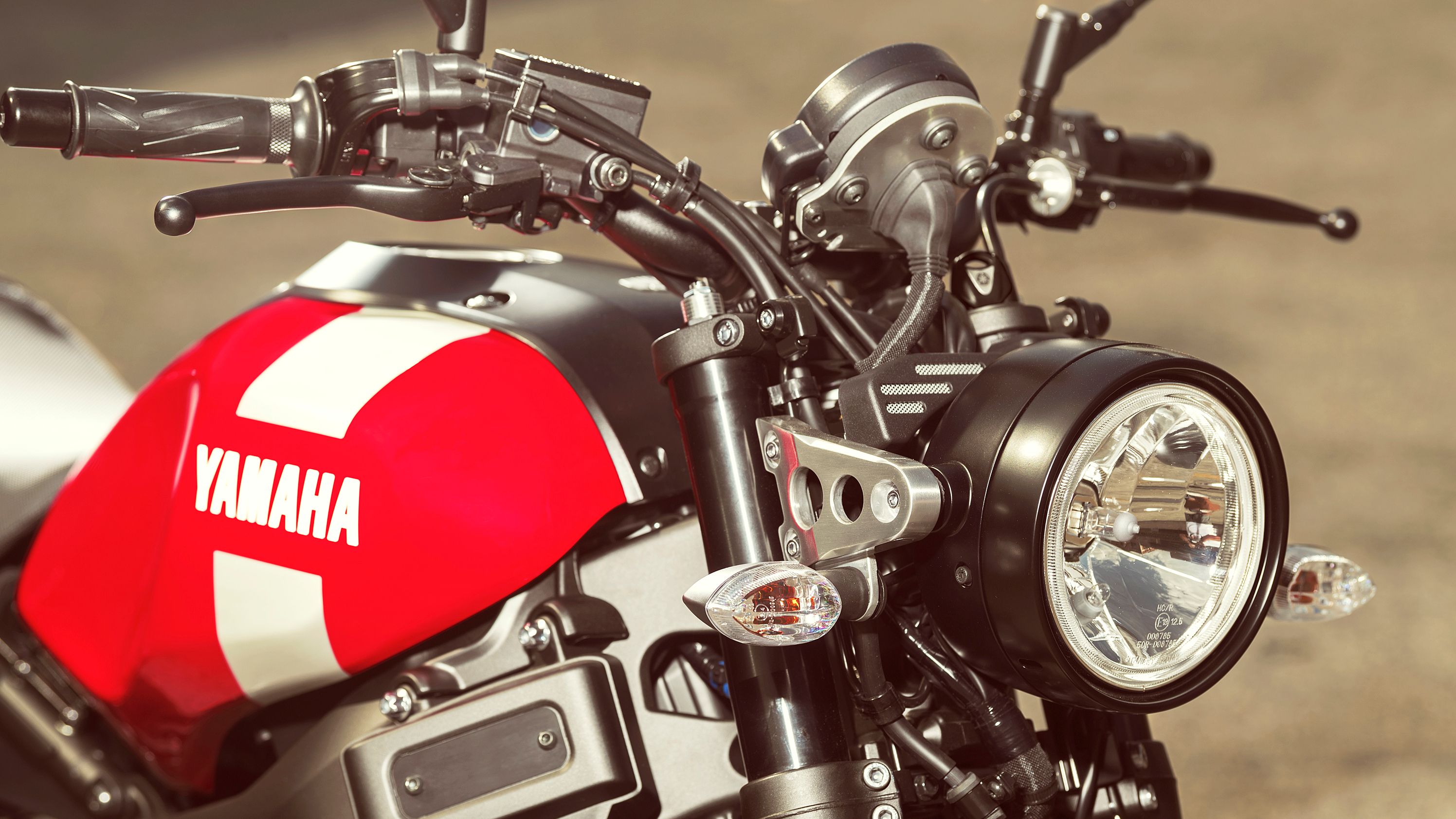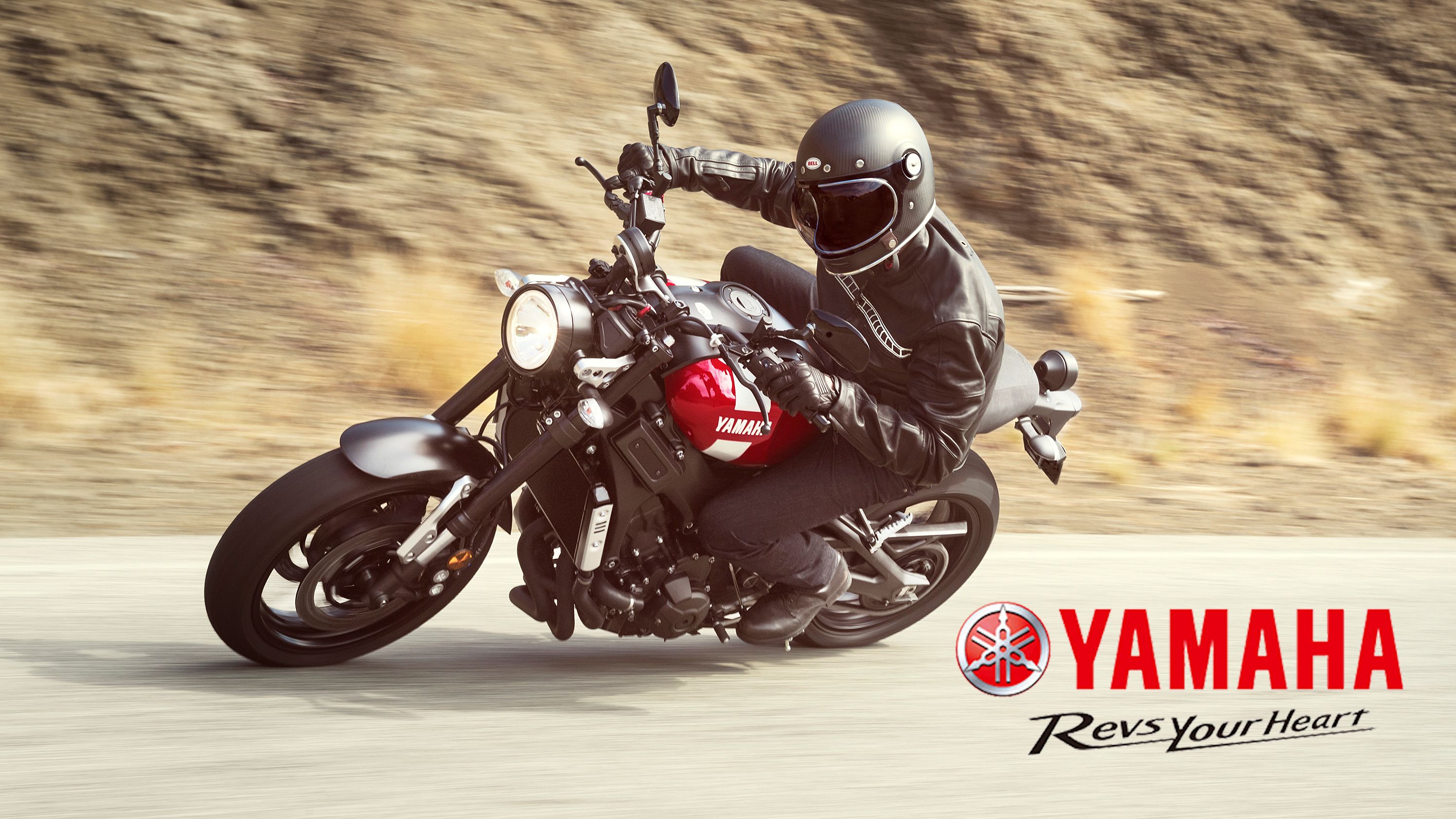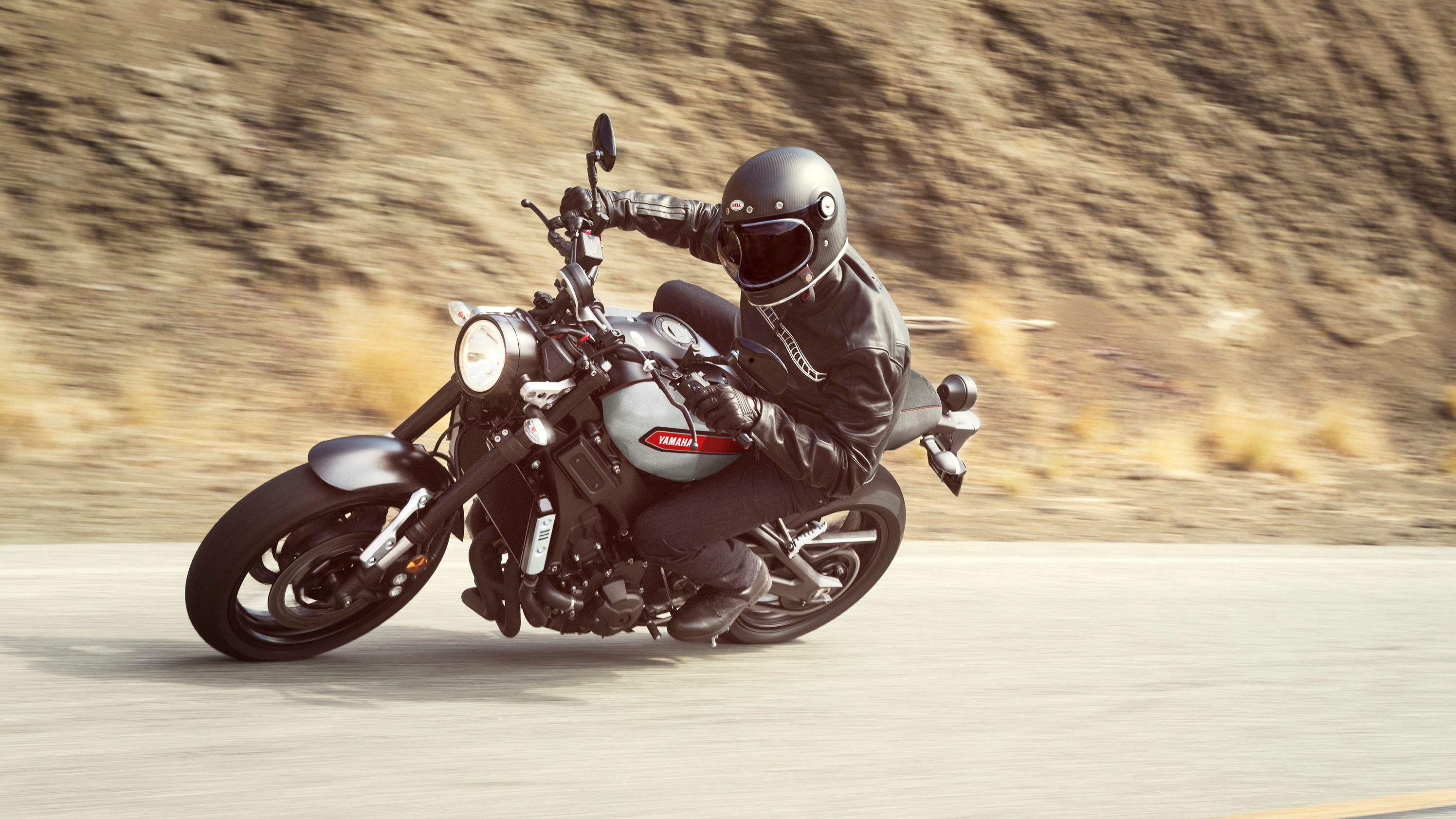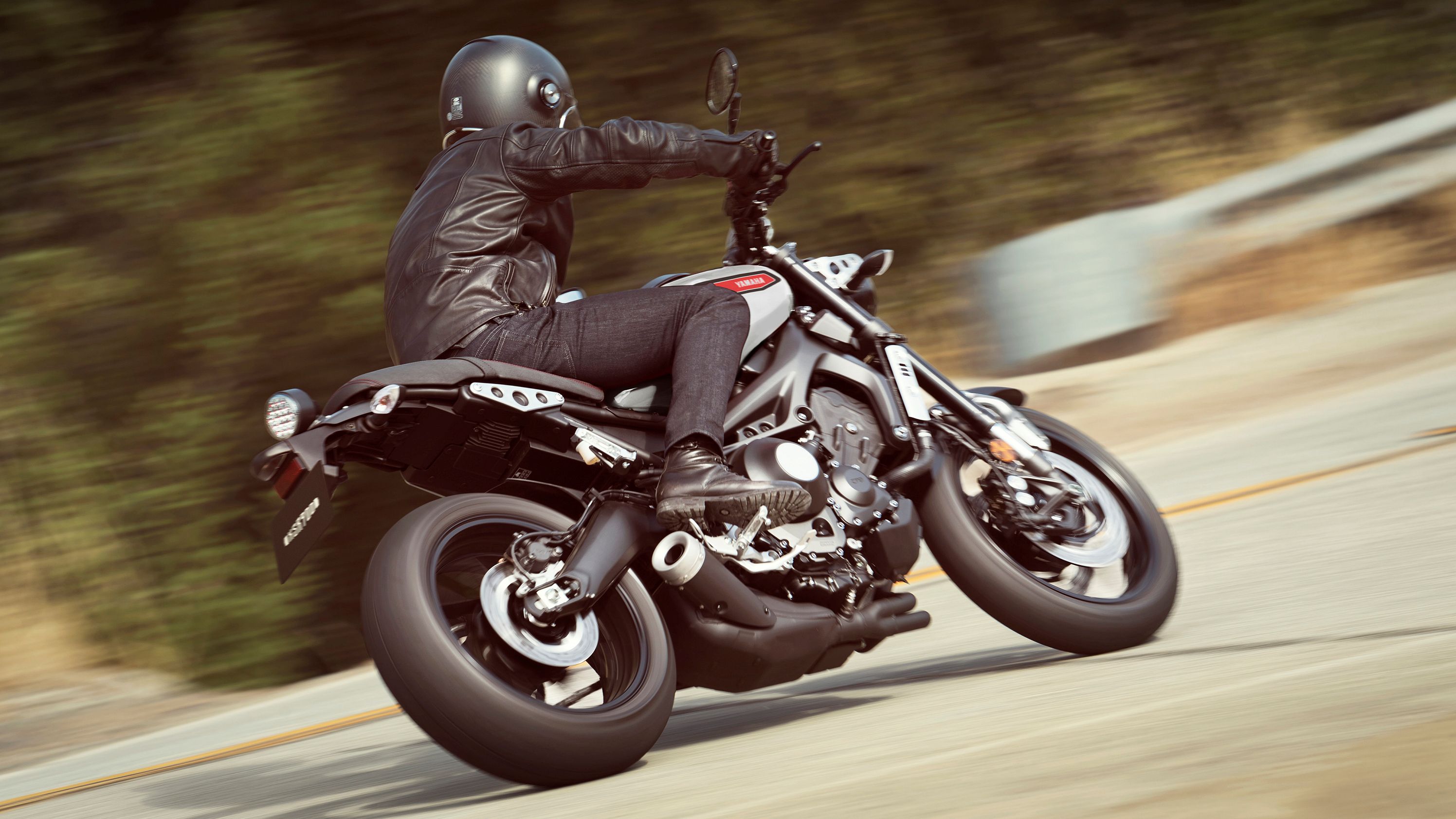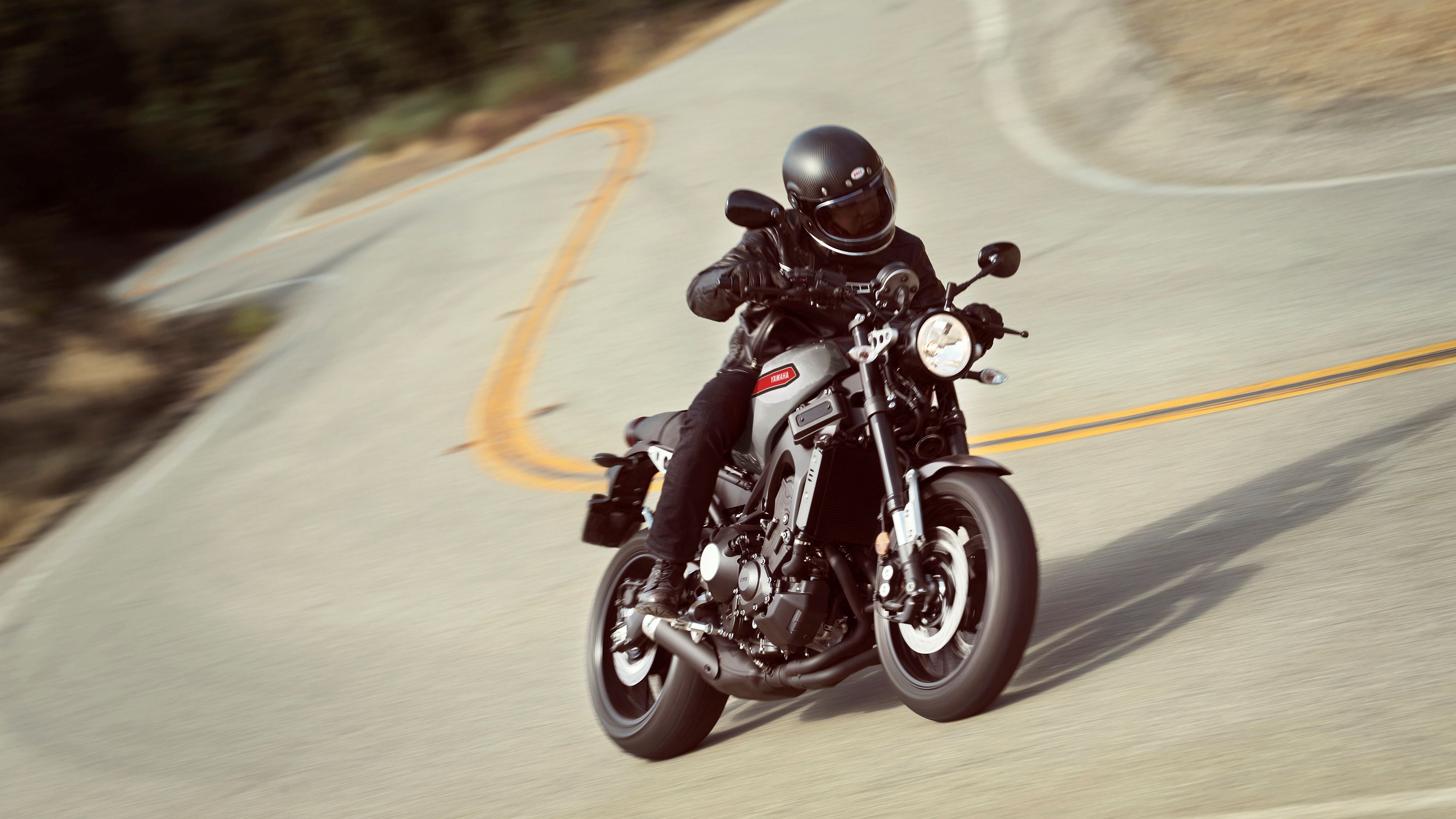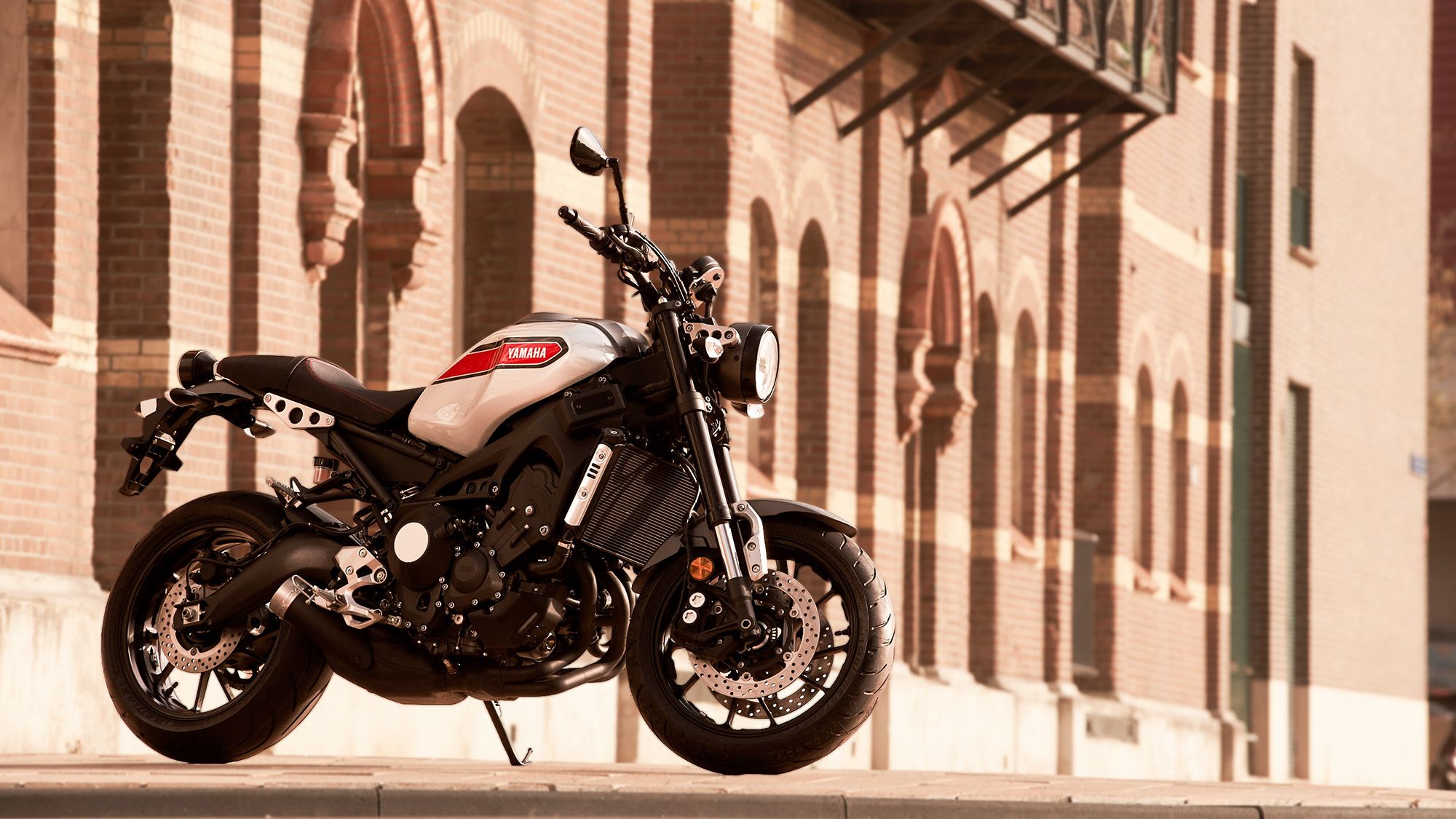Influenced by the classic “XS” series from the '70s and '80s, the XSR900 from Yamaha shows its roots with retro styling and stepped seating combined with just enough modern tech that you know you're in the 21st century. At first glance, it looks like a nice little bike: compact and sporty. On second glance...and third...it looks like a whole lot of bike for an affordable price.
2016 - 2021 Yamaha XSR900
- Make: Array
- Model: 2016 - 2021 Yamaha XSR900
- Engine/Motor: inline-3
- [do not use] Vehicle Model: Array
Yamaha XSR900 Design
When I start talking about retro, I automatically start thinking stripped down, low tech, and completely pragmatic with old-school styling. Not so with the new-from-2016 XSR900. With traction control, ABS, and ride-by-wire with three power modes that you can switch on-the-fly, this little bike has a nice mix of retro looks and modern tech; a nice combination that we don't always see at this price.
Add that to what could be called 'ordinary' tires. Why is ordinary noteworthy? With a 120/70 rubber on the front and a 180/55 on the rear -- typical sport-bike sizes -- as an XSR900 owner, you enjoy the benefits of being able to find really good tires so you don't have to sacrifice performance. That can't always be said of other retro-styled bikes that keep the charm of the old-school looks right down to the tire sizes, limiting your options for getting good rubbers.
Yamaha XSR900 Chassis
A well-exposed, aluminum frame forms a sort of stylized Trellis skeleton with the engine as a stressed member to complete the assembly on the XSR900. This future/alien look carries right over onto the asymmetrical swingarm that features a split member on the left side to accommodate the drive chain and its guard, and a sharply kinked member on the right.
The frame is certainly more ornate than usual, but since it's a naked bike with everything bared to the world, it makes sense to use the standing rigging as part of the overall visual appeal rather than simply a functional component. Yamaha was really going for a clean-looking bike with this effort, and the tucked-away monoshock tidies up the rear end nicely.
It comes with the usual preload adjuster plus a rebound-damping adjustment and 5.1 inches of travel. Beefy, 41 mm, upside-down front forks buoy the front end on 5.4 inches of travel, and come with the same adjustments as the rear. A steering-head angle of 25 degrees gives us 4.1 inches of trail and a compact 56.7-inch wheelbase. Dual front brakes sport 298 mm discs and four-pot, opposed piston binders with a 245 mm disc in back, all under ABS protection.
At 32.7-inches tall with 5.3 inches of ground clearance, the XSR900 is typical of the naked streetfighter genre; built for handling, not necessarily for easy ground access. Still, the narrow waist and tapered seat should offset that somewhat. Cast-aluminum, 10-spoke rims mount the 17-inch hoops, and the 120/70 front and 180/55 rear rubbers make the final connection to the pavement.
|
Suspension / Front: |
41mm inverted fork, adjustable preload and rebound damping; 5.4-in travel |
|
Suspension / Rear: |
Single shock, adjustable preload and rebound damping; 5.1-in travel |
|
Brakes / Front: |
Dual 298mm discs; ABS |
|
Brakes / Rear: |
245mm disc; ABS |
|
Tires / Front: |
120/70ZR17 |
|
Tires / Rear: |
180/55ZR17 |
Yamaha XSR900 Drivetrain
Yamaha used this opportunity to run its 847 cc, Crossplane Crankshaft Concept engine in the XSR900, which is a water-cooled triple based on the FZ-09 mill. The factory packed away some Easter eggs in the engine, so let's get crackin'.
First, some nifty mechanical stuff. Staggered intake funnels and four-valve heads feed the 78 mm x 59.1 mm cylinders, and the factory used its fracture-split technique on the crankshaft end of the conrods, a procedure that produces superior fitment to conventional machine work, at least according to Yamaha. (Wink,nudge.) The staggered intakes work with the ride-by-wire throttle to help even out power delivery across the range, and while it isn't quite as sexy as Ducati's variable intake system, it's certainly better than nothing and a nice, progressive touch.
Along with the ride-by-wire system comes the D-Mode that allows you to choose between three different power curves, and you can switch up on the fly without pulling over and stopping first. As an added bonus, a traction-control system monitors wheel speed and intervenes when wheel slip is detected. The strength of that intervention is based on one of two settings, while a third setting turns the traction control off altogether.
Slipper clutches are becoming more and more ubiquitous every day it seems, and the hydraulic slip-and-assist clutch made it onto the XSR900. I like this technology. Not only does it provide a bit of safety when scrubbing speed ahead of a turn, but it makes the clutch lever easier to pull in, and who doesn't like a clutch that's easier to pull in?
The clutch couples engine power to the six-speed gearbox for the final delivery to the rear wheel via chain drive. Being a triple, you really have to wind it up to get the power out of it, but in the (top) end, it delivers some fun numbers. We have a claimed 64.5 pound-feet of torque at 8,500 rpm, backed up by 113 ponies at 10 grand. Bear in mind this bike is only 430 pounds soaking wet, so this is plenty of power for some serious shenanigannery.
|
Engine Type: |
847cc liquid-cooled DOHC inline 3-cylinder 4- stroke; 12 valves |
|
Bore x Stroke: |
78.0mm x 59.1mm |
|
Compression Ratio: |
11.5:1 |
|
Fuel Delivery: |
Yamaha Fuel Injection with YCC-T |
|
Ignition: |
TCI: Transistor Controlled Ignition |
|
Transmission: |
6-speed; multiplate assist-and-slipper wet clutch |
Yamaha XSR900 Pricing
MSRP on the 2021 XSR900 is $9,499, the same 2020. Also the same as 2020 is the Radical White/Rapid Red two-tone colorway. Yamaha covers your new ride with a one-year limited factory warranty.
|
Warranty: |
1 Year (Limited Factory Warranty) |
|
Color: |
|
|
2016: |
Matte Gray/Aluminum, 60th-Anniversary Yellow |
|
2017: |
Titanium Blue |
|
2018: |
Rapid Red |
|
2019: |
Aluminum/Red |
|
2020, 2021: |
Radical White/Rapid Red |
|
Price: |
|
|
2016: |
$9,490; 60th-Anniversary Yellow - $9,990 |
|
2017 - 2021: |
$9,499 |
Yamaha XSR900 Competitors
Yamaha compared the XSR900 to the Ducati Scrambler, but that didn't quite seem apples-to-apples to me. Isn't it funny how the manufacturer always wins their head-to-head when they get to pick the competitor? They want Ducati? Okay, let's see what else is in their stable that I might like better in a head-to-head.
Ducati Monster 821
The XSR900 has a certain “Mad Max” air about it, so I decided to pair it off against one of my favorite Max-tastic Ducatis, the Monster 821. Although the Monster frame isn't quite as artistic as the XSR, Trellis frames have an intrinsic charm all their own and the Ducati's bones come off looking pretty sharp, if not as sharp as the XSR. Both bikes carry a clean, naked-bike panache }}that almost seems to try to conceal their street-legal status. Lean as a snake and trimmed down to the core, these two are like different sides of the same coin.
The three-banger, 847 cc XSR mill wins in displacement, if only by a few cubes over the L-twin, 821 cc Testastretta plant. Power numbers are nearly identical in spite of the difference in configuration. Ducati's Desmodromic Testastretta cranks out 65.8 pound-feet at 7,750 rpm and 112 horsepower at 9,250 rpm with Yamaha's Cross Plane Concept engine hot on its heels giving up 64.5 pounds of grunt at 8,500 rpm and 113 ponies at 10,000 rpm. Close enough. Since both bikes carry ABS, RbW throttles, rider modes, and traction control, neither gains an upper hand in gadgetry either. In short, a race between the two will be decided by rider skill, not machine.
Yamaha scores at the till with a $9,499 sticker on the base model. A bit lower than the $11,995 sticker on the Monster, and given the similarities in looks, performance and gadgetry, I'm not sure I could justify paying that much more if I had to choose between the two. I think Yamaha really hit the nail on the head with the XSR900.
See our full review of the Ducati Monster 821.
He Said
My husband and fellow writer, TJ Hinton, says, “I like it. Kind of tough, really bare, and I gotta say I'm feeling both the shape of the subframe/saddle area and the black, bolt-up console. The artsy exoskeleton is just icing on the cake, and I would point out that the traction control and rider modes? Yeah. Usually don't see them on bikes under the $10k mark. Kudos on that Yamaha.”
She Said
“All things considered, it's a nice bike with prime customization potential. The ground clearance makes the seat height a bit tall, speaking as a height-challenged rider, but the compact size and gutsy performance make it a nice weekender. The not-too-bad fuel economy make it a potential commuter and all for an affordable price. I started out thinking this is a nice little bike and now that I've had a chance to really look at it, I'm now thinking, 'Wow, this is a nice little bike a nice little bike}}.' I wonder how it would do with some street knobbies for a little action.”
Yamaha XSR900 Specifications
|
Engine & Drivetrain: |
|
|
Engine: |
847 cc liquid-cooled DOHC inline 3-cylinder 4- stroke; 12 valves |
|
Bore x Stroke: |
78.0 mm x 59.1 mm |
|
Compression Ratio: |
11.5:1 |
|
Fuel Delivery: |
Yamaha Fuel Injection with YCC-T |
|
Ignition: |
TCI: Transistor Controlled Ignition |
|
Transmission: |
6-speed; multiplate assist-and-slipper wet clutch |
|
Final Drive: |
Chain |
|
Chassis: |
|
|
Suspension / Front: |
41 mm inverted fork, adjustable preload and rebound damping; 5.4-in travel |
|
Suspension / Rear: |
Single shock, adjustable preload and rebound damping; 5.1-in travel |
|
Brakes / Front: |
Dual 298 mm discs; ABS |
|
Brakes / Rear: |
245 mm disc; ABS |
|
Tires / Front: |
120/70ZR17 |
|
Tires / Rear: |
180/55ZR17 |
|
Dimensions & Capacities: |
|
|
L x W x H: |
81.7 in x 32.1 in x 44.9 in |
|
Seat Height: |
32.7 in |
|
Wheelbase: |
56.7 in |
|
Rake (Caster Angle): |
25.0° |
|
Trail: |
4.1 in |
|
Maximum Ground Clearance: |
5.3 in |
|
Fuel Capacity: |
3.7 gal |
|
Fuel Economy: |
44 mpg |
|
Wet Weight: |
430 lb |
|
Details: |
|
|
Warranty: |
1 Year (Limited Factory Warranty) |
|
Color: |
|
|
2016: |
Matte Gray/Aluminum, 60th-Anniversary Yellow |
|
2017: |
Titanium Blue |
|
2018: |
Rapid Red |
|
2019: |
Aluminum/Red |
|
2020, 2021: |
Radical White/Rapid Red |
|
Price: |
|
|
2016: |
$9,490; 60th-Anniversary Yellow - $9,990 |
|
2017 - 2021: |
$9,499 |
Further Reading
Yamaha
Read more Yamaha news.


